13 November 2019
By portermathewsblog
via reiwa.com.au

Residential master bedroom designed by Meli Studio
Downsizing is a part of life, as well as part of your property journey. But, just because you are moving into a smaller space, doesn’t mean you have to downgrade on the visual appeal.
We spoke with interior design expert, Julie Ockerby of Meli Studio who specialises in sophisticated living for seniors nationwide, who said downsizing is the perfect opportunity to design your ‘forever home’ exactly the way you want it.
Here are Julie’s 10 tips to help you downsize in style, while making the most out of your smaller space.
1. Only keep the things you love
Downsizing gives the perfect opportunity to give away or even sell anything in your life that doesn’t make your heart sing.
It may well be that you’ll need to buy smaller furniture items anyway, so consider this as an opportunity to let go of tired old pieces and replace them with the furniture that you’ve always wanted, especially when you don’t have to worry about pleasing anyone but yourself!
2. Don’t be afraid to be bold
When picking fabrics for any new furniture, throws, bedspreads, curtains or cushions, don’t be afraid to go bold with colours and textures, as this can help bring smaller spaces to life.
To really future-proof your new abode, pick fabrics that are stain resistant and with waterproof backing.
3. Height matters
Make sure that any new furniture is at a height that suits you. Ensure your bed is not too low or too high, while sofas and armchairs should not be too low, for ease of access as you get a little older.
4. Give yourself space
To create a home you can live in for as long as possible, space is essential.
This may seem counter-intuitive when downsizing, but even though you’re probably losing two or even three bedrooms, make sure your rooms are not too small to allow good access around your bed, dining table, chairs and sofas. You’ll be especially thankful for this if you or your friends end up needing a walking stick.
 Julie Ockerby holding the fabric collection of her new range
Julie Ockerby holding the fabric collection of her new range
5. Deck the walls
One area you might need to edit a bit, but don’t need to cull dramatically, is your artwork.
Create a dramatic feature wall by covering one wall with your favourite pieces, potentially combining art from several rooms in your old house.
6. Avoid clutter
Clutter is the enemy of good interior design and easy living. Cluttered tables and shelves are harder to keep clean, easier to mess up or knock over, and can actually be confusing on the eye and thus the mind.
You’ll appreciate and enjoy having just your favourite trinkets on display – even if you have to rotate them every now and again.
7. Don’t slip up
Use non-slip tiles wherever possible. Definitely use them in the bathroom, but also consider the kitchen and laundry, where spills can quickly become just as much of a hazard as a wet bathroom floor.
8. Light up your life
Good lighting, especially in often neglected areas like the shower or the dressing space in front of your wardrobes, can make a huge difference to the functionality, aesthetics and safety of essential areas that are used daily.
9. Say no to sharp corners
This applies to all ages and can give you more room to move without worrying about bumping into any nasty corners. It’s also an especially handy tip for when visiting grandchildren are toddling around.
10. Spoil yourself
Finally, splash out a with just a bit of the financial equity you hopefully free up when downsizing on an interior feature you’ve always dreamt of but could never quite afford.
Perhaps it’s a top-of-the-line steam oven, his and hers vanities or a stunning statement piece of art.
Are you looking to downsize in Perth? See what’s for sale.
Comments (0)
21 August 2019
By portermathewsblog
via domain.com.au

I’ve learnt a few lessons and gleaned good advice from colleagues. Photo: Stocksy
After almost a decade in the same house, I’d forgotten how painful it can be to move.
The sort, the pack, the kids circling around your feet – and, in our case, a stressed cat who marked his territory somewhere but smelt like everywhere – and clearing the last of the household dross before a manic clean.
We would have loved to have outsourced every aspect of the move but budget constraints came into play so we were forced to take on the task ourselves.
In a few months we have to do it again, and this time we’re going to do things differently. I’ve learnt a few lessons and have gleaned good advice from colleagues. This is what we’ve learnt:
1. Hire movers (or rope in friends with beers and pizza) early
We found many of our preferred moving companies were already booked. What’s more, you need to research their costs and reputation. Ours charged on an hourly rate, but once the big hand crossed from 10am we were pinged for the full 60 minutes’ labour.
 Gather a packing kit early. This includes tape, plenty of boxes and permanent markers. Photo: Stocksy
Gather a packing kit early. This includes tape, plenty of boxes and permanent markers. Photo: Stocksy
2. Change your address details in advance
Contact insurers, the bank, the council and so on. Embrace Australia Post’s mail forwarding service, which will notify some parties like banks, energy and phone providers.
3. Assemble your packing kit
Hoard boxes in many sizes. We were lucky to have a friend who’d recently moved, but also try supermarkets and liquor stores which often have spare boxes available. Cheap but large bags, the type you find at $2 shops, are great for soft big items such as linen, pillows, clothing and rugs.
You’ll also need packing tape, a tape dispenser (no one likes hunting for the start of the roll), bubblewrap or – just as good and more environmentally friendly – old newspapers for wrapping breakable and fragile items. We sorted out our linen cupboard fairly early on and found towels, pillow cases and flannels to be great items to wrap things like wine glasses and plates. Make sure you have a few permanent markers to label boxes.
 Hire movers (or rope in friends with beers and pizza) early. Photo: Jason South
Hire movers (or rope in friends with beers and pizza) early. Photo: Jason South
4. Marie Kondo the hell out of your home
Tackle packing and sorting your belongings with this room-by-room approach almost the moment the house contract is signed. Even if you pack just one box a day during this process, that will ease the pressure on moving day. This is the perfect time to donate or sell that chest of drawers, and rid yourself of excess kitchen equipment or unwanted clothing.
Start with things you don’t really need on a day-to-day basis. Books and trinkets can be packed early. And you’ll be surprised how little your kids will miss their toys.
Tackle the kitchen at the beginning. How many wine glasses, mugs, utensils and cooking gadgets do you really need? Think like a motel owner and leave the bare minimum to make your meals for the next few weeks.
 Start organising and packing your home room-by-room almost the moment the house contract is signed. Photo: Stocksy
Start organising and packing your home room-by-room almost the moment the house contract is signed. Photo: Stocksy
5. Colour-code the boxes relating to your rooms
If only we had done this, it would have made things so much easier to find our iron, hair dryer and Alexa – they are still missing …
6. Remove boxes immediately
If there is space, perhaps in a secure garage or basement, start placing the packed boxes away. This clears the house, and stops the urge to break into them to hunt for something later. If this isn’t an option, pack a full room or clear a large space where boxes can be left untouched.
7. Clean as you pack
Vacuum behind the beds, and give the doors and cupboards a wipe down – this will save time and effort on moving day.
 Always designate a special place for your house keys. Photo: iStock
Always designate a special place for your house keys. Photo: iStock
8. Pay someone to clean the oven
If your budget stretches to any outsourcing, let it be for this. Cleaning the oven is a crappy job at the best of times, let alone at one of the most stressful. I can think of little worse than wiping oven cleaner and scrubbing metal racks on the evening we left. Awful.
9. Eat your way out of your home
Refrain from big grocery shops in the weeks leading up to your move. Try to use whatever you’ve got on hand, which will make the move (plus the cleaning of the fridge, freezer and pantry) all that much easier.
10. Stuff, seal and shut drawers
There’s no need to empty your clothing drawers. Get as much in them as possible, then simply seal them shut and ship them off.
 Boxes with lids are great for those essentials you’ll need on the first night at your new home including toiletries, breakfast for the next day and tea and coffee. Photo: iStock
Boxes with lids are great for those essentials you’ll need on the first night at your new home including toiletries, breakfast for the next day and tea and coffee. Photo: iStock
11. Avoid an electrical assemblage nightmare
Place electrics in their own separate box. Take a picture before disassembling these items to see how the now-jumbled cords should be plugged in when you arrive at your new abode. Clear, resealable sandwich bags are great for screws and small parts that will be needed later.
12. Pack ‘the next day’ essentials
Invest in some large clear boxes with lids. These are great for those essentials you’ll need on the first night at your new home including toiletries, breakfast for the next day and tea and coffee. It’s a good idea to include two changes of clothing for you and the family, one work outfit and the school uniforms (including shoes), bedding for your first night, some towels and details of a good takeaway joint – cooking is going to be the last thing on your mind.
13. Make a place for your keys
And be vigilant about putting them back there during the shift. My set ended up in my son’s school bag.
 If you can, hire a babysitter. Photo: Stocksy
If you can, hire a babysitter. Photo: Stocksy
14. Hire a babysitter
If that’s not an option, ask friends and family to mind the kids on the day of the move. We are forever grateful to our friends who took our young children for this stressful day.
15. Leave cleaning equipment and supplies somewhere handy
You’ll need them on shifting day and at your new house – we now have two of everything.
Comments (0)
30 May 2019
By portermathewsblog
via finance.nine.com.au

Australia’s housing market downturn is coming to an end, with leading economists predicting a spike in house prices as soon as July.
Property prices fell one per cent nationally in January, with CoreLogic data showing a smaller decline of 0.5 per cent in April – a result tipped to be repeated for May.
It comes after Commonwealth Bank’s incoming, home loan applications jumped to a 10-month high and strong predictions of interest rates cuts.
 Expect to see a whole lot more of these in the coming months. (AAP)
Expect to see a whole lot more of these in the coming months. (AAP)
“Australia’s house price growth reached its worst on an annualised basis in January. Prices have continued to fall since then, but the rate of decline has slowed,” the bank wrote in a statement.
“If you look at prior cycles, an increase in house prices occurred five to seven months after the trough in the annualised growth rate. Using the average of six months, prices could rise by July.”
The bank said in every Australian house price cycle since 1989, price growth followed within seven months after the monthly annualised price decline bottomed.
 Graph showing the trend repeating over the past 30 years. (Supplied)
Graph showing the trend repeating over the past 30 years. (Supplied)
Macquarie’s prediction extends further than past performance, with the bank also attributing looming interest rate cuts, relaxed lending conditions and the recent election result to its positive outlook.
“With the surprise Coalition election win, APRA’s policy change and an expected June RBA rate cut, we are more confident Australian house prices could rise within months,” the note read.
“This should flow through to better growth in housing finance and building approvals.”
AMP Capital chief economist Shane Oliver shares similar sentiments.
“The combination of the removal of the threat to property tax concessions, earlier interest rate cuts, financial help for first home buyers and APRA relaxing its 7 per cent interest rate test points to house prices bottoming earlier and higher than we have been expecting,” he said in a note.
“We now expect capital city average house prices to have a top to bottom fall of 12 per cent— of which they have already done 10 per cent — rather than 15 per cent and to bottom later this year.”
A swing in property prices has been supported with the Commonwealth Bank saying last week it saw the highest level of home loan applications in ten months.
This also coincides with CoreLogic data from the same period showing median home prices in Sydney and Melbourne increased by 0.3 per cent and 0.1 cent, respectively.
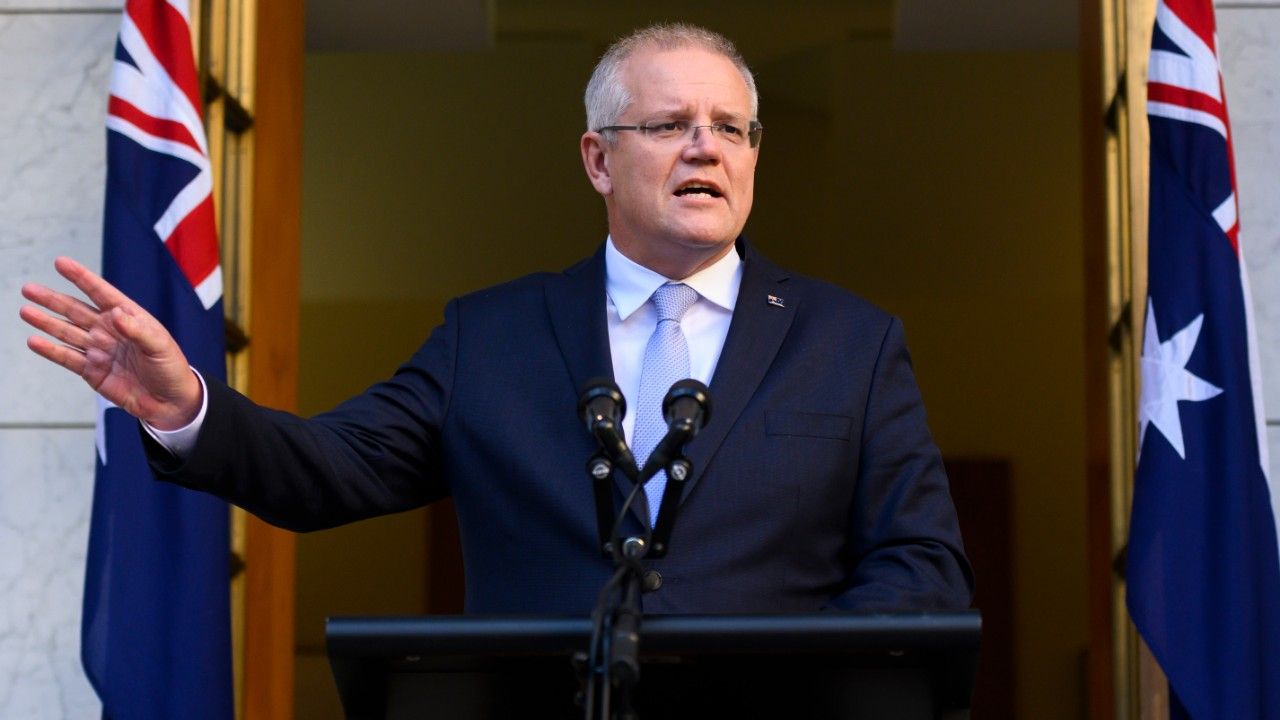 Prime Minister Scott Morrison’s victory has helped the market, economists say. (AAP)
Prime Minister Scott Morrison’s victory has helped the market, economists say. (AAP)
Nine finance editor Ross Greenwood said the threat of changes to the tax treatment on Australian housing created a lot of uncertainty in the market, but since Scott Morrison’s victory this has shifted to a “sense of immediate euphoria”.
“It is actually good news if people kind of feel OK about things,” he told Today.
“But the one thing about this is it now comes back to the old-fashioned leaders of the economy – what the Reserve Bank does, whether we get tax cuts.
“These are the things that put cold hard cash in people’s pockets. At the end of the day, that’s the thing that counts.”
Greenwood added tax cuts would have a bigger impact long-term on household budgets and finances than a decline in interest rates.
“The problem is because one-third of families have a mortgage, whereas two-thirds of families are trying to save for a mortgage to own their home and they have savings in the bank,” he said.
Comments (0)
15 October 2018
By portermathewsblog
via reiwa.com.au
 Affordability in Perth’s residential sales market improved during the September 2018 quarter, with house and unit prices softening marginally.
Affordability in Perth’s residential sales market improved during the September 2018 quarter, with house and unit prices softening marginally.
REIWA President Damian Collins said there was excellent opportunity for buyers and investors to take advantage of current market conditions to secure their next home or investment property.
“While the worst of the market downturn appears to be behind us, the results of the September 2018 quarter reveal conditions are favourable for buyers and investors,” Mr Collins said.
Median house and unit price
reiwa.com data shows Perth’s median house price should settle at $505,000 for the September 2018 quarter.
“This is 1.9 per cent lower than the June 2018 quarter median and one per cent lower than last year’s September quarter,” Mr Collins said.
“While quarterly median figures can be more subject to stock composition changes, the fact that the annual change is only one per cent lower suggests that we are at or near the bottom.
“It was a similar story for the unit market, with the median expected to settle at $395,000, which is 1.3 per cent lower than the June 2018 quarter and 2.5 per cent lower than the September 2017 quarter.”
While the overall market experienced a decline in median house price during the quarter, 57 suburbs across the area bucked this trend.
“The top performing suburbs for median house price growth were Swan View, East Cannington, Como, Hillarys and Cottesloe.” Mr Collins said.
“In the unit market, Maylands, Midland, Tuart Hill, Fremantle and Claremont were the suburbs with the strongest price growth.”
Sales activity
There were fewer sales in the September 2018 quarter than there were during the June 2018 quarter.
Mr Collins said reiwa.com data showed 6,428 sales for the quarter, which was 4.9 per cent lower than last quarter.
“It’s not uncommon to experience a decline in sales during the September quarter, with West Australians typically less inclined to search for property during winter. We tend to see activity slow during the winter months before increasing again as the weather warms up,” Mr Collins said.
The share of house sales in Perth has increased, with reiwa.com data showing houses now comprise 74 per cent of all sales, compared to 65 per cent at the same time last year.
Perth’s top selling suburbs for house sales during the September 2018 quarter were Baldivis, Canning Vale, Morley, Dianella and Gosnells, while the suburbs to record the biggest improvement in house sales activity were Cooloongup, The Vines, Alexander Heights, Mirrabooka and Wattle Grove.
“It’s a good time to buy, which is reflected in the fact a higher proportion of houses are now being sold. This shift in the composition of sales (houses, units and land) indicates buyers are more inclined to purchase a house than they might have otherwise been. This can be attributed to housing affordability improving across the metro area, which has made buying a house a more attainable property purchase,” Mr Collins said.
“We’ve also seen an increase in activity between the $350,000 and $500,000 price range during the September quarter, which is pleasing as it indicates first home buyers remain an active component of the Perth market.”
Listings for sale
There were 13,850 properties for sale in Perth at the end of the September 2018 quarter.
Mr Collins said stock levels across the metro area had declined 3.7 per cent during the quarter.
“It’s pleasing that, although there were fewer sales this quarter, listing stock continues to be absorbed.
“This is the third consecutive quarter we’ve seen listings for sale decline, which is a positive step forward in the market’s recovery,” Mr Collins said.
Comments (0)
08 October 2018
By portermathewsblog
via therealestateconversation.com.au
Almost one in five Aussies are missing out on bargains because they are scared off by auctions.

Source: Real estate insiders
Buyers are throwing great property bargains onto the scrapheap before they have even seen them because they’re scared off by auctions, experts say.
Universal Buyers Agent property expert Darren Piper said buyers are missing out on bargains of up to 25 per cent because they are frightened off by auction sales.
“It can be daunting if you don’t know what you’re doing,” Mr Piper said.
“With television shows turning up the theatre and adrenaline of an auction it can cause buyers quite a lot of anxiety.
“But for those who aren’t put off it can be a great way to get in the door and find a real bargain.”
A recent survey by finder.com.au found one in five Aussies are “terrified” of auctions with many buyers passing over listings with an auction process.
Although the process can be intimidating Mr Piper said professional buyers agents can help to do the heavy lifting for buyers by attending auctions, making bids and finding properties worth inspecting.
“The first reaction many people have when they see a listing set as an auction is to give it a miss.
“We cut through the smoke and mirrors and ask the hard questions to determine if the auction if worth pursuing and just what kind of bargain you could get.
Mr Piper said a client had discounted a listing at 27 Cowper Street, Bulimba believing the auction listing was likely out of their price range.
But after enquiring with the estate agent and working out the value the client was able to secure the property at auction for $50k less than their max price range.
Mr Piper said it is also worth finding out how many bidders are expected to manage expectations and avoid falling into a price war.
“Most buyers turn to water at the thought of standing in a public place staring down other buyers and engaging with a boisterous auctioneer.
“We make the process less scary so buyers have the choice of handing over bidding to an expert and ensuring they get the best deal possible.
“There’s nothing worse than being out bid after you’ve spent time and money on a property, but with the right help you can snap up a real bargain.”
Comments (0)
01 October 2018
By portermathewsblog
via reiwa.com.au
Author: REIWA President Hayden Groves
 Real estate transactions are complex. For many West Australians, it can be a challenge to determine their individual rights and responsibilities when it comes to dealing with property issues.
Real estate transactions are complex. For many West Australians, it can be a challenge to determine their individual rights and responsibilities when it comes to dealing with property issues.
REIWA launched a public information service in 1992 to assist buyers, sellers, tenants and landlords navigate their property journeys. This valuable service allows members of the WA public dealing with a REIWA agent to find answers to their real estate queries and concerns.
Last financial year more than 20,000 phone calls were placed to the REIWA Information Service (2,000 more than the previous financial year), with West Australians seeking clarification and assistance from the Institute on a wide range of real estate matters.
As the WA market has slowed these past few years, the REIWA Information Service has seen call volumes increase. Residential property management continues to be the most common topic the public ring about, with 70 per cent of all phone calls for the year to date received from tenants and landlords. The remaining 30 per cent of calls have generally related to residential sales.
When it comes to WA tenants, they most commonly call REIWA to discuss the early termination of their rental lease. They also want to know what rights their landlords have to enter their property while tenanted and what rights they have with regards to repairs and maintenance.
Landlords, on the other hand, most commonly call to seek information on a tenant’s obligation to pay rent, to find out how the court system works in order to claim damages and to clarify their rights around abandoned goods.
In the residential sales market, buyers who call the REIWA Information Service generally do so to get information about their obligation to obtain finance approval within a period of time. They also commonly call to clarify their rights for the pre-settlement inspection. While WA sellers most frequently ring to find out about the settlement process, satisfying contractual conditions and to discuss buyer requests which are not addressed in the contract for sale.
The REIWA Information Service team is comprised of two full time staff members and 70 local REIWA agents who give three hours of their time every few months on a voluntary basis.
When you call up, you are given direct access to these local property experts who can educate you on areas you’re unsure about and help resolve any tricky property matters you might be facing.
If you are dealing with a REIWA agent and have a real estate query you want answered, I’d highly recommend contacting the REIWA Information Service on 9380 8200 for assistance.
Comments (0)
17 September 2018
By portermathewsblog
via therealestateconversation.com.au
The property industry is continuing to drive the Australian economy according to the latest economic growth data.

The Australian economy grew by 0.9 per cent in seasonally adjusted terms in the June 2018 quarter National Accounts released last week, with annual growth of 3.4 per cent.
Investment in new dwellings increased 3.6 per cent for the quarter, with strong results in Victoria and South Australia.
The construction industry grew by 1.9 per cent for the quarter.
Construction within the residential property sector grew by 3.1 per cent and non-residential property sector by 1.3 per cent over the quarter.
The ABS noted that the recent pickup in new dwelling investment reflected strong approvals in early 2018 which are now flowing through to commencements.
“The property industry is helping to propel economic growth to its highest level since 2012, highlighting its importance as a driver of jobs and economic prosperity,” said Ken Morrison, Chief Executive of the Property Council.
“Our national economic well-being depends on a strong property industry, supported by smart investment in vital public infrastructure for our growing cities.”
“The benefits of growth are overwhelmingly positive, but must be locked in and supported by good planning and smart infrastructure investment to ensure all Australians reap the gains,” Mr Morrison said.
Comments (0)
10 September 2018
By portermathewsblog
via therealestateconversation.com.au
Malcolm Gunning, President of the Real Estate Institute of Australia (REIA), and Leonard Teplin, Director of Marshall White debate the potential implications the most recent leadership spill could have for the residential property market.
It feels like we’ve had more leadership spills than seasons of The Bachelor, and some industry leaders are worried that Australia’s reputation for changing Prime Ministers at the drop of a hat is having negative consequences across the property market.
Director of Marshall White, Leonard Teplin says the constant change of leadership in Australia is driving residential buyer sentiment to an all-time low, and it’s the Australian public who are left to sit back and watch the fallout, again and again.
“There are no real winners, only losers. The Australian public must once again sit and watch while the effects ripple across our economy and property market,” Mr Teplin said.
“It’s no secret that every time there is an election, market sentiment drops, people delay purchases and put off big decisions until the new leader has been decided, and election promises turn into policies.
“In real estate, this sentiment is reflected in weaker conditions as buyers cautiously await the inevitable policy changes and market overcorrections that are sure to follow suit.
 Industry leaders are concerned about the potential implications the leadership spill could have on the property market. Image by Adz via WikiCommons
Industry leaders are concerned about the potential implications the leadership spill could have on the property market. Image by Adz via WikiCommons
“As Scott Morrison gets set to take over as the nation’s leader, property purchasers both locally and abroad will be questioning what this change in direction will mean for them and their investments,” Mr Teplin told WILLIAMS MEDIA.
But Malcolm Gunning, President of the Real Estate Institute of Australia (REIA) doesn’t believe the leadership spill will have a drastic impact on the property market.
“I don’t think there will be any change because Scott Morrison was really the architect of the current economic policy,” Mr Gunning told WILLIAMS MEDIA.
“Tougher lending criteria introduced by the APRA, and the banking royal commission is what’s really having the biggest influence on the market at the moment.”
Jock Kreitals, CEO of the REIA agrees.
“In terms of the recent changes of Prime Ministers and Ministers, I do not see any impact on the market attributable to this. The policy of the Coalition regarding negative gearing and CGT remains unchanged.
“The PM as the previous Treasurer has reiterated the position a number of times. Further, the PM well understands the impact of changes in policy having worked in a policy role in the property sector,” Mr Kreitals told WILLIAMS MEDIA.
Real Estate Institute of New South Wales (REINSW) CEO, Tim McKibbin says the new Prime Minister should put good fiscal policy ahead of economically damaging, populist politics.
“Those advocating for removing the deductibility of expenses incurred in earning assessable income in the residential property market are damaging people’s ability to acquire a home,” Mr McKibbin told WILLIAMS MEDIA.
“This is adversely impacting the property industry – Australia’s biggest employer – and playing petty politics in the misguided belief it will promote their personal brand.”
Potential implications for foreign investment revenue
Mr Teplin believes the latest leadership spill could impact international investment revenue.
“A stable government is a pillar of optimised liveability and one of the main reasons Australia has enjoyed a consistent influx of foreign investment into the real estate market, in turn driving the delivery of new infrastructure and economic progress,” Mr Teplin said.
This recent setback could be detrimental for Australia’s international investment revenue, “which serves a much-needed portion of the market that drives new residential supply and delivers stock to the rental market,” Mr Teplin continued.
Mr Gunning told WILLIAMS MEDIA the message the government is sending to overseas investors is what worries him the most.
“Our government seems to be very stable – and I’m not talking about leadership changes – but both parties are reasonably well aligned in policy. What sends the discouraging message is the tightened immigration and the taxing of foreign investors,” Mr Gunning said.
“Chinese investment into Australia’s residential property market has stopped, and I can say with conviction that the message this sends back to China is that they’re not welcome. So it’s more about the message it sends by the government rather than the changes in leadership.”
“It will take investors out of the market”
If Labor were to win the next election, as it appears they will, Mr Gunning says the rental market will suffer.
“Labor is absolutely rusted on to negative gearing. They are of the opinion that it will help affordability, which is completely incorrect. What it will do is drive up rents because there will be fewer people buying investment property,” Mr Gunning said.
“There has been 13 per cent growth in rent over the last five years, which is historically low and below inflation. If Labor gets in, it will take investors out of the market which will hinder supply – up goes the demand and the cost of rent.”
Mr Kreitals told WILLIAMS MEDIA that if Labor were to be elected, the current market falls would be “exacerbated”.
“Labor has on many occasions, including recently, reiterated the position that it took to the 2016 election to change negative gearing and CGT arrangements. In the lead up to the 2016 election, a number of studies were undertaken to examine the impact of such changes. In short, housing prices will fall and rents will go up.
“SQM Research, for example, forecast that in the first year of the policy, prices would fall by up to 3 per cent, and by up to 8 per cent and 4 per cent in the following two years.
“It needs to be remembered that at the time of the 2016 election, property prices were rising. Introduction of Labor’s measures would exacerbate the current market falls and flow on to the construction industry and economic growth,” Mr Kreitals said.
 Industry leaders debate the implications the leadership spill could have on the property market. Image by Maxmillian Conacher via Unsplash.
Industry leaders debate the implications the leadership spill could have on the property market. Image by Maxmillian Conacher via Unsplash.
And if stability is the cornerstone of sound investment, Mr Teplin says buyers will look to take their money elsewhere for more predictable returns in safer markets.
“As sentiment plummets and the population continues to grow faster than new stock can be delivered to meet the market, now more than ever we need a strong, stable, united government to help rebuild the real estate market and deliver stock to where it is most needed,” Mr Teplin said.
“Political in-fighting isn’t just bad for business on a global scale – its effects are felt right across the property market long after party room vengeance has been executed.”
Affordability improving for renters, first home buyers
The June quarter 2018 edition of the Adelaide Bank/REIA Housing Affordability Report found that affordability has improved for renters and the number of first home buyers increased during the second quarter of 2018.
The number of first home buyers increased to 28,401 – an increase of 7.3 per cent during the quarter and an increase of 20.6 per cent in the June quarter of 2017.
First home buyers now make up 17.8 per cent of the owner-occupier market, compared with 14.3 per cent at this time last year.
Rental affordability improved in New South Wales, Victoria, Queensland, South Australia and Tasmania, remained steady in Western Australia and declined in the Northern Territory and the Australian Capital Territory.
New South Wales remains the least affordable state for renters, where the proportion of income required to meet rent repayments is 28.8 per cent – 4.7 percentage points higher than the national level.
Scott Morrison admitted last year that Australia has a housing affordability problem and announced a number of measures in the May budget.
“There are no silver bullets to make housing more affordable. But by adopting a comprehensive approach, by working together, by understanding the spectrum of housing needs, we can make a difference,” Mr Morrison said at the time.
Mr Kreitals told WILLIAMS MEDIA it’s worth considering the importance of property to the economy, highlighted by the latest GDP figures.
“For the quarter, the economy grew by 0.9 per cent and 3.4 per cent for the year, which is the fastest rate of growth since the September quarter 2012.
“The property industry is continuing to drive the Australian economy with investment in new dwellings increasing 3.6 per cent for the quarter. The construction industry grew by 1.9 per cent for the quarter and 5.5 per cent over the year,” Mr Kreitals said.
Comments (0)
04 September 2018
By portermathewsblog
via therealestateconversation.com.au
Jon Bahen, director of Abel Property – Cottesloe told WILLIAMS MEDIA about building inspection reports in Western Australia, including what they are, why you need one, and what they cover.
What is a building inspection report? And do you need one?
For most people purchasing a property is one of the biggest financial decisions they will make in their life and it is always important to ensure due diligence on the home has been done. A building inspection report can be part of this process and is a great way to protect your interests and peace of mind.
In most circumstances, a building inspection report is included as a condition of the Contract for Sale. The investigation for this report needs to be carried out by a qualified building inspector, surveyor or builder and the cost for this report is borne by the buyer.
There are a number of different types of building reports with different cost structures. For example, a basic structural inspection can be obtained for $280 for a single level three bed, two bath, brick and tile/metal home with slab on the ground, while a premium inspection which is usually used is around $495. This expenditure is a wise investment considering the potential cost of buying a property that needs extensive unexpected restoration and repairs.
What does a building inspection report look like?
The report will include photos and address of the property, name of the applicant, the time and date and the age of the home. It also lists the name, contact details, and qualifications of the inspector, including their WA Builders Registration number.
Next, a summary of the significant findings will be highlighted to ensure the prospective buyer can easily see what necessary or immediate repairs are required.
The report will contain explanations of the definitions used by the inspector to record the condition of the property and any disclaimers and information about what is not reported on.
The remainder of the pages will contain photos and detailed room-by-room information on the condition of the floors, walls, ceilings, doors, and all fixtures including bathroom and kitchen appliances.
What does a building inspection report cover?
The inspection covers a visual assessment of the property and provides an opinion regarding its general condition. An estimate of the cost to repair the defects is not within the scope of the Australian Standard and does not form part of a report. If the property is part of strata or company title, the inspection does not cover common property, only the immediate interior and exterior.
The electrical and plumbing systems are only checked for basic functioning. If the buyer requires a more detailed report on these systems, they will need to employ licensed professional plumbers or electricians.
Comments (0)
20 August 2018
By portermathewsblog
via www.therealestateconversation.com.au
Reaching the 25 million population milestone should be the catalyst for the creation of productive, vibrant and liveable cities that will underpin Australia’s future prosperity.
 Source: Reiwa
Source: Reiwa
Australia’s future rests overwhelmingly with our cities and their ability to become high amenity, high liveability engines of our economy,” said Ken Morrison, Chief Executive of the Property Council of Australia.
“Our population is growing strongly and most of that growth is occurring in our cities. We need to redouble our focus on policies that support investment, planning and collaboration to create the great Australian cities of the future.
“Population targets, decentralisation policies or adjusting immigration rates can’t allow us to take our eyes off the main game which must be our ability to create great cities for current and future generations of Australians.
“The growth of our cities is part of an international trend for cities to be a magnet for people, business, investment and economic and cultural activity.
“We’re not alone in needing to plan, invest and manage for change as the worldwide trends towards urbanisation gathers pace in this ‘metropolitan century’,” Mr Morrison said.
The drivers of urban growth were set out in the ‘Creating Great Australian Cities’ research published by the Property Council earlier this year.
It highlighted the growing economic importance of cities around the world, and set out a series of principles and recommendations based on the experience of other fast growing cities of similar size to Australia’s. These cities are capturing an expanding share of business, immigration, visitors, talent and capital flow.
The report found that Australian cities had strengths, including their economic performance investment attraction, higher education and natural environment but they were performing poorly in several key areas critical to success in the metropolitan century, including issues such as transport congestion, fragmented systems of governance, infrastructure investment and limited institutions at a metropolitan scale to manage growth.
“Our cities are at the heart of Australia’s economic, social and cultural life, attracting people, investment and services that drive innovation, creativity and enterprise,” Mr Morrison said.
“Any population policy that doesn’t strengthen Australia’s ability to create great cities of the future is completely missing the mark.
“Our cities are already a great competitive advantage for Australia, bringing together the people, services and infrastructure to drive our economic competitiveness.
“We need to keep investing in the right infrastructure, plan for a growing future and put in place smarter systems of metropolitan governance to capture the full potential of the metropolitan century while sustaining the quality of life and access to services that Australians value.
“We need to take on both the challenges and opportunities of the ‘metropolitan century’ and not run away from the reality that growing cities can be successful cities and great places for people to live and work.
“With the right planning, policies and ambition, we can create truly great cities for a growing Australia,” Mr Morrison said.
Comments (0)
10 August 2018
By portermathewsblog
via popsugar.com.au
 Image Source: Studio McGee
Image Source: Studio McGee
Wouldn’t it be so nice to know what an interior designer actually notices in your home? Having this information would make it that much easier when you clean or decorate new spaces, or even when you decide what to renovate and what to leave as is. It can be somewhat difficult to take a critical eye to your own space that you see consistently day after day, but knowing where to place your focus and creative energy would certainly help to take out some of that guesswork, so we decided to reach out to design professional Shelly Gerritsma from Canter Lane Interiors instead. Read on to learn the five design elements she always notices first and wants you to focus on first as well.
Flooring
 Image Source: A Beautiful Mess
Image Source: A Beautiful Mess
As soon as she steps into your home, Shelly notices what’s beneath her feet. “Flooring is a major item. If carpet is dated/worn/sagging/etc, it really devalues the home,” Shelly says. So, instead of using that area rug that has probably seen better days, opt for a brand new design in a fun print, or if you want to really get creative, try adding hardwoods in a funky colour. Shelly will notice!
Wall Colour & Finish
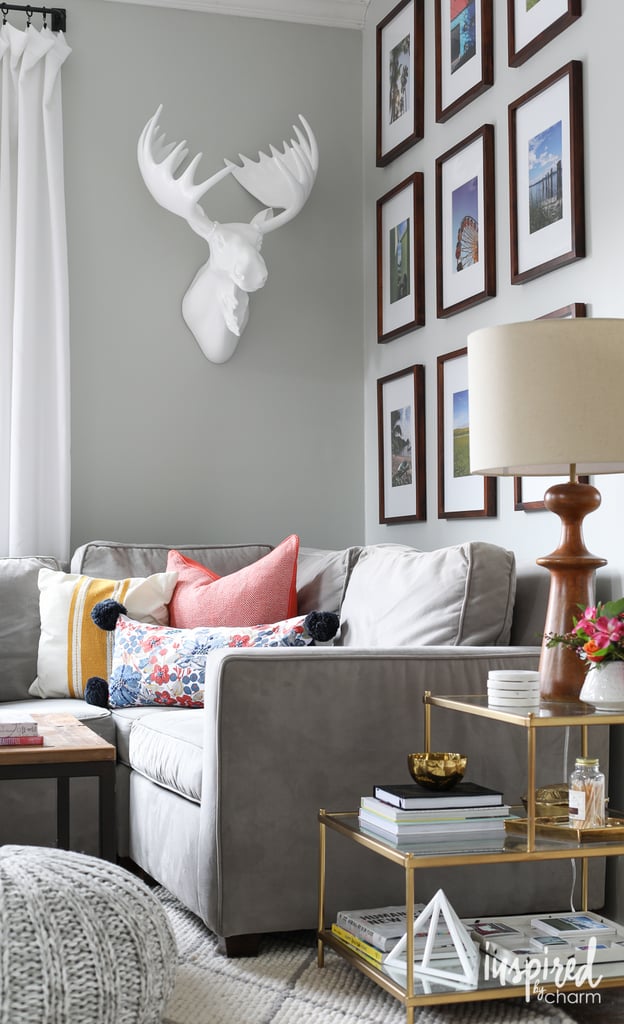
Image Source: Inspired by Charm
Once she’s assessed the flooring, Shelly is onto your wall colour and finishes. She advises that “using the proper paint finish for spaces is huge. Do not use a semi-gloss or a gloss paint finish on main living walls as it cheapens the space and looks too harsh. Stick with a flat or matte finish.” She also reminds us that nothing draws negative attention quicker than sloppy paint lines, so always ensure that those appear neat and finished.
Ceilings
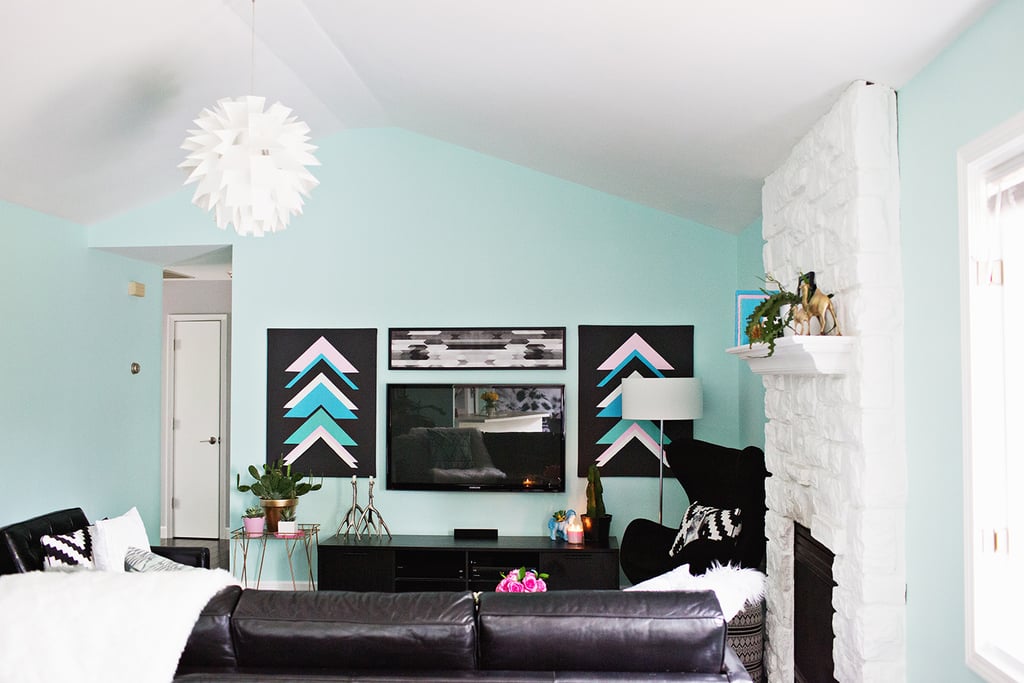 Image Source: A Beautiful Mess
Image Source: A Beautiful Mess
Another foundational element that will draw major attention from Shelly is your ceiling. Whether you want to modernise the appearance of your ceiling or you just need to open up the space a bit, this is one area that you won’t regret putting some time into. Shelly confirms that “smoothing out popcorn ceilings is a great way to add home value and to make spaces feel larger due to the shadows cast by this dated finish.”
Scale-Appropriate Furniture
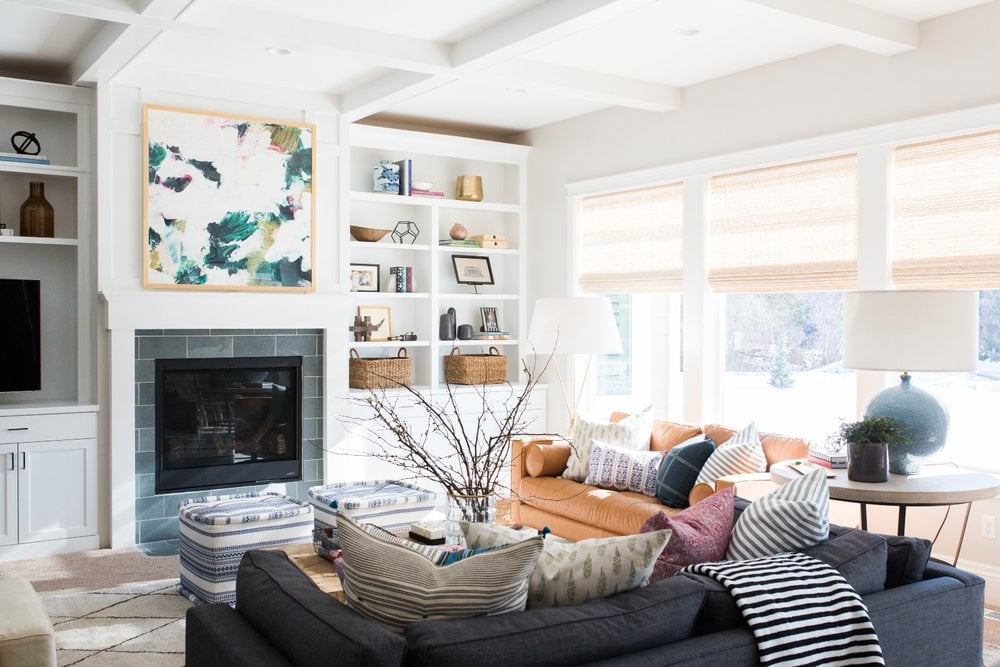 Image Source: Studio McGee
Image Source: Studio McGee
Properly scaled furnishings are key when it comes to creating a harmonious flow that’s sure to get noticed in your home. Shelly says, “Make sure that your furniture is not overwhelmingly large or so small that it looks out of balance in the space.” A huge sectional that is crammed into a space or a dainty nightstand displayed in an oversize master bedroom will do nothing but draw negative attention.
Clutter!
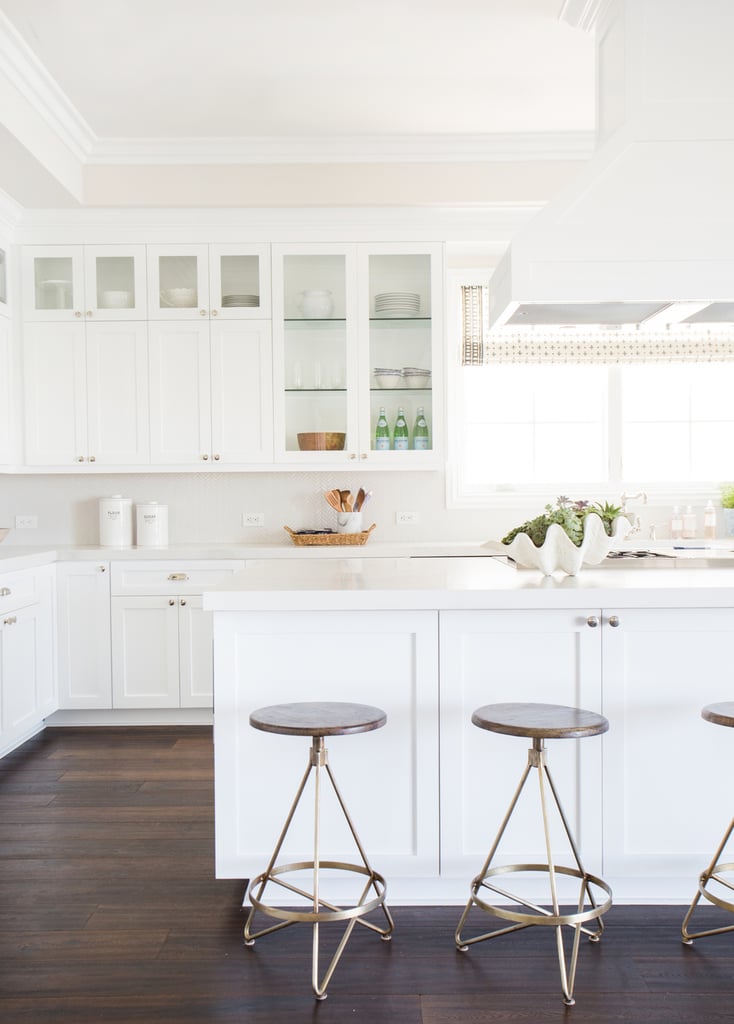 Image Source: Studio McGee
Image Source: Studio McGee
And lastly, we finish up with none other than that attention-grabbing eyesore: clutter. Yes, clutter! Shelly promises, “Keeping spaces clean and clutter to a minimum is a huge plus. Our spaces truly affect our well being, and spaces that are messy and dirty can have major psychological and physical impact.” Plus, not only will your guests appreciate your clutter-free home but you too will benefit from your Zen space.
Comments (0)
07 August 2018
By portermathewsblog
via https://www.therealestateconversation.com.au
Property prices in Perth have strengthened during the June 2018 quarter, according to fresh research from the Real Estate Institute of Western Australia (REIWA).
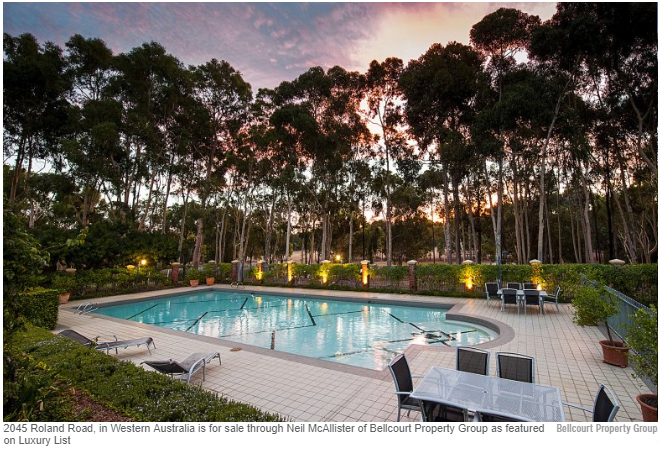
Simon McGrath, principal of Abel McGrath in Perth told WILLIAMS MEDIA now is the time to “be strategic and make a committment to securing a property in that location you’ve always wanted”, as data from the Real Estate Institute of Western Australia reveals property prices in Perth are strengthening.
REIWA President, Hayden Groves told WILLIAMS MEDIA the data indicates Perth’s median house price would settle at around $520,000 for the June 2018 quarter, which was up one per cent compared to the March 2018 quarter and two per cent compared to the June 2017 quarter.
“In addition, Perth’s median unit price is expected to lift by 4.9 per cent to $419,500 for the June 2018 quarter, which is 2.3 per cent higher than the same time last year,” Mr Groves said.
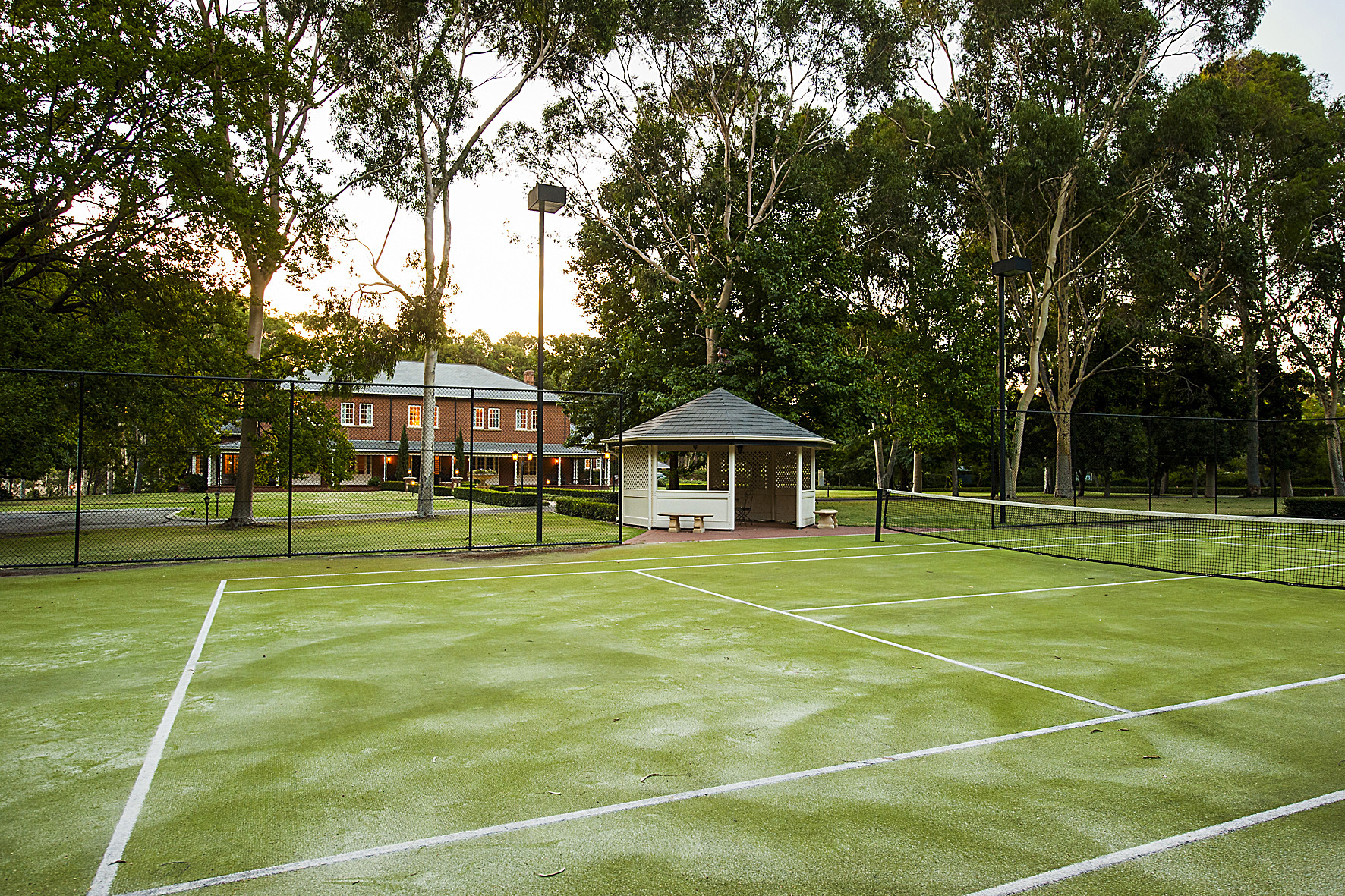 2045 Roland Road, in Western Australia is for sale through Neil McAllister of Bellcourt Property Group as featured on Luxury List
2045 Roland Road, in Western Australia is for sale through Neil McAllister of Bellcourt Property Group as featured on Luxury List
“After declining during the March quarter, it is pleasing to see prices rebound strongly this quarter. With the worst of the market downturn appearing over, the improvement in house and unit prices this quarter suggests buyer confidence is returning which should bode well for sellers as we move into spring,” Mr Groves said.
Mr McGrath’s advice to those looking to enter the market is to act now.
“At times like these, properties become available that would generally not be available. That is the big gift in this market,” McGrath said.
Overall, Mr McGrath says the market is “okay, but not great”.
“Perth is nothing but a big mining town. The flow-on effect from the mining industry affects Perth’s real estate market, so you’ve got a real upswing. Behind the scenes there is plenty of optimism.
“There is still plenty of caution in the market, prices aren’t shooting up. It is a very stoic market.
“We are seeing reasonable numbers at home opens, but it can be very spasmodic. Some home openings will be fantastic, others very quiet – there is no rhyme or reason to it,” Mr McGrath continued.
With 6,900 sales recorded during the June 2018 quarter, sales volumes declined during the June quarter. Mr Groves said the onset of winter likely contributed to subdued activity levels.
“It’s not uncommon for activity to drop off this time of year. Traditionally, activity tends to slow during the winter months before picking up again in spring,” Mr Groves said.
 2045 Roland Road, in Western Australia is for sale through Neil McAllister of Bellcourt Property Group as featured on Luxury List
2045 Roland Road, in Western Australia is for sale through Neil McAllister of Bellcourt Property Group as featured on Luxury List
Despite the overall decline in sales, numerous suburbs recorded more sales this quarter than they did in the last quarter.
“The suburbs with the biggest improvement in house sales were North Perth, Queens Park, Singleton, Camillo and Beldon, while West Perth, Balcatta, Rockingham, Claremont and Mount Lawley had the biggest improvement in unit sales,” Mr Groves said.
“Good quality family homes attracting a lot of attention”
REIWA data shows the composition of sales shifted during the June quarter, with more house sales recorded in the $800,000 and above price range than in the last quarter.
“The June 2018 quarter continued the trends observed during the December 2017 quarter, with good quality family homes attracting a lot of attention in aspirational areas,” Groves told WILLIAMS MEDIA.
“As the Western Australian economy begins to regain strength and owner-occupier loans remain the most affordable they have been in decades, buyers are recognising there is good opportunity to secure a family home in areas that might previously have been considered out of reach,” Mr Groves said.
Listing stock has “hit the ceiling”
Mr Groves told WILLIAMS MEDIA stock levels across the metro area have declined 1.1 per cent during the June 2018 quarter.
“We certainly appear to have hit the ceiling as far as listing stock is concerned. Despite fewer sales being recorded this quarter, it is encouraging to see stock levels have continued to be absorbed,” Mr Groves said.
On average, it took 67 days to sell a house in Perth during the quarter, one day faster than both the March 2018 and June 2017 quarters.
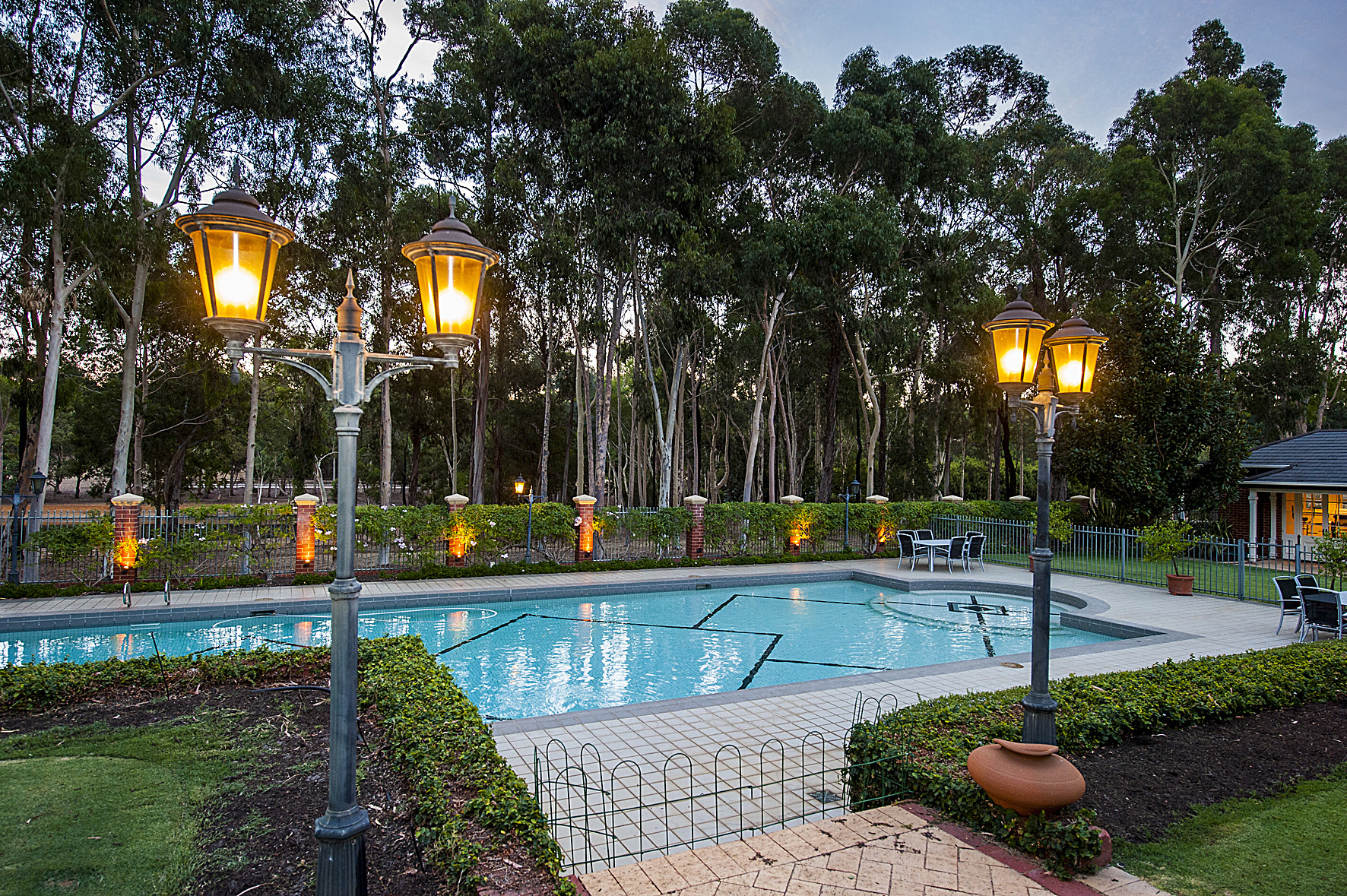 2045 Roland Road, in Western Australia is for sale through Neil McAllister of Bellcourt Property Group as featured on Luxury List
2045 Roland Road, in Western Australia is for sale through Neil McAllister of Bellcourt Property Group as featured on Luxury List
Mr McGrath told WILLIAMS MEDIA that although the market is pretty tough, his area in the western suburbs of Perth have short supply.
“There’s no denying – it is pretty tough. The good news in the western suburbs is that we have got short supply, whereas in the greater Perth market there is oversupply in many places. The short supply in the western suburbs is ticking the value of buoyance.” Mr McGrath said.
Less vendors discounting their asking price
Data for the June 2018 quarter shows the proportion of vendors who had to discount their asking price in order to achieve a sale declined by five per cent.
“With reductions observed in average selling days and discounting, this is a good indicator sellers are listening to the advice of their agents and pricing their property in line with market expectations,” Mr Groves said.
Comments (0)
30 July 2018
By portermathewsblog
via The West Australian

The West Australian economy is “out of the woods”, one of the nation’s most respected forecasters has declared, with housing and wages finally gaining traction.
Amid warnings the Turnbull Government was making the same mistake of the Howard government by spending a temporary revenue bump on expensive personal income tax cuts, Deloitte Access Economics said the outlook for WA was definitely brightening.
The State endured its worst year on record through 2016-17 while the domestic economy had been in the doldrums for the past four years. But a string of data, including job figures, point to an important turnaround.
Deloitte Access director Chris Richardson said it was now clear WA was recovering from the economic “wave” that was the end of the mining boom.
He expects a lift in retail sales, population growth, wages and housing construction will all improve through this year and accelerate into 2019-20.
Wage growth alone is tipped to more than double the insipid 0.6 per cent growth endured by private sector workers last financial year. “WA’s economy is out of the woods, but it isn’t quite yet out of the doldrums,” Mr Richardson said.
“The good news is that WA’s economy is gradually making its way on to a more settled and sustainable path. The State is restructuring and rebalancing and looking for non-mining related sources of growth.”
While most focus has been on the collapse in engineering spending by the mining sector, Deloitte Access highlighted the step-up by the State Government to fill the void.
It said the first stage of the $3 billion Perth Metronet, which includes 72km of rail line and 18 stations, would give a needed boost to the local economy. The situation is a little different for the Federal Budget, with Deloitte Access concerned that recent tax cuts are built on a mirage of improved tax revenues.
Mr Richardson said tax cuts were built on an increase in tax revenues that was likely to be transitory. The Budget was also expecting to absorb the cuts while it was still in deficit.
He said a gradual slowdown in China would eat into the better tax collections from the resources sector while a tightening of credit would hit east coast property markets. “Oz has repeated an old mistake: spending a temporary revenue boom on permanent promises,” he said.
Comments (0)
27 July 2018
By portermathewsblog
via houzz.com.au
Furniture that does more than one job is a godsend in a small home – here’s what you need to know before you buy.
In this practical series, we ask experts to answer your burning home and design questions. Here, Christine Gough, interior design leader at Ikea Australia, shares her top tips for selecting multi-functional furniture for a compact home.
If you’re struggling with clutter, a lack of space or a shortage of storage in your home, multi-functional furniture can really help. So what makes for a multi-functional piece? It is flexible, performs more than one function, and it can be moved around or customised to suit your needs. It often also includes storage, giving you a useful home for clutter so you can create a clear and inviting home.
Here are a few of the most useful designs to consider.

Image: Delaktig range at Ikea
Modular sofas
Modular sofas allow you to personalise your seating so that it fits your space – and your needs – perfectly. Choose from a ready-made combination of sofa pieces, or create a new combination to suit your home.
Modular sofas are designed with many functions and possibilities in mind. Many contain hidden storage, while others can be converted into a sofa bed to house an overnight guest. You’ll also find styles with removable covers so you can update the look of your sofa with ease.
‘Open-source’ furniture takes the idea of personalisation one step further. Ikea’s new modular Delaktig sofa (designed in conjunction with British designer Tom Dixon) has an aluminium frame and the set-up can be endlessly configured to suit your changing needs – add a side table, a lamp or two, move an armrest or change the cover, for example.

Storage or nest tables
If space is tight, pieces that do double duty, such as a coffee table with shelves or a storage basket, are a boon. They provide the perfect spot to store cushions, magazines and kids’ toys. Choosing a design on castors means you can also move it to different spots in a flash.
A nest of coffee tables is also a great option for a small space. It offers endless possibilities – pull the trio apart and use as separate side tables when you have friends over for drinks, or place them side-by-side to create one long coffee table for takeaway pizza night.
Furniture with concealed storage
Ottomans are an incredibly useful piece of furniture for any living room – they can act as seating, footstools or even a makeshift table to pop a book or magazine on. Select one with hidden storage inside, and it will provide you with a handy extra spot to store blankets, throws and the kids’ play things.

What are the most useful features to look for in a multi-functional piece?
- Customisable: You should be able to personalise it to suit your style and living needs.
- Neutral colours: Shades of grey, taupe and stone will co-ordinate with most colour palettes, and can easily be updated seasonally with the addition of pattered and coloured cushions and throws.
- Flexibility: Look for features such as removable covers and castors that make it easy to move pieces around or switch up the look of your space.
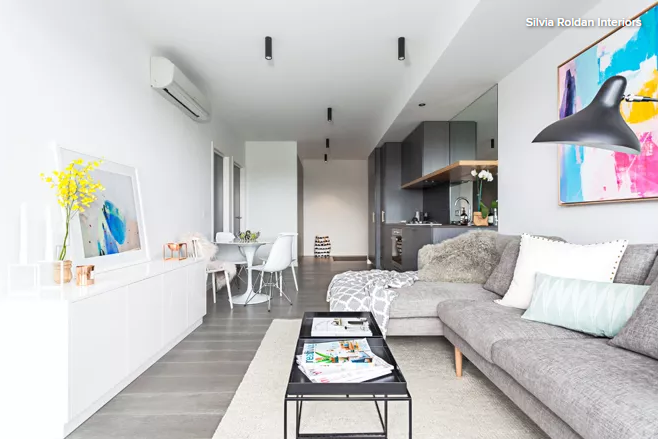
Zone smart
It’s not just furniture that’s gone multi-functional, it’s rooms too. With many of us moving to smaller homes and open-plan living increasingly the norm, the number of activities that happen in each room has increased. Once upon a time, our living rooms were used for socialising or watching television, but today you might eat dinner there, play games, listen to music, fold laundry and even exercise.
To get the best from a multi-functional room, position furniture to create zones for different activities, such as dining, socialising, work and exercise. Be led by the space and your lifestyle needs, and not by convention. If it works better in your space to have a pair of modular sofas positioned back-to-back or side-by-side rather than a traditional sofa set-up, go for it.
When positioning furniture, factor in foot traffic too. There should be enough room to move through the room comfortably.
Image: Ikea
Comments (0)
23 July 2018
By portermathewsblog
via therealestateconversation.com.au
Real estate in Perth is at its most affordable on record, as falling prices give first home buyers their best chance of stepping onto the property ladder, according to the Housing Industry Association (HIA).
 37 Marita Road, Nedlands, Perth under offer with Michelle Kerr from Abel McGrath as featured on Luxury List. Abel McGrath
37 Marita Road, Nedlands, Perth under offer with Michelle Kerr from Abel McGrath as featured on Luxury List. Abel McGrath
Figures from the Housing Industry of Australia (HIA) Affordability Index show Perth is the most affordable of the nation’s capital cities.
In the June 2018 quarter, the Housing Industry of Australia (HIA) Affordability Index registered 74.9, up by 0.4 per cent over the quarter and up by 0.8 per cent compared with a year earlier when affordability had reached its poorest level in nearly six years.
The HIA Affordability Index is designed so that a result of exactly 100 means that precisely 30 per cent of earnings are absorbed by mortgage repayments.
Higher results signify more favourable affordability – those above 100 signify that mortgage repayments account for less than 30 per cent of gross earnings, whereas scores below the 100 mark mean that more than 30 per cent of average earnings are absorbed by mortgage repayments.
According to HIA’s analysis, Perth is the most affordable capital city to buy a home in with an affordability rating of 111.7, closely followed by Darwin (95.6), Brisbane (93.4), and Hobart (94.4).
37 Marita Road, Nedlands, Perth under offer with Michelle Kerr from Abel McGrath as featured on Luxury List.
“Perth continues to present good opportunities for buyers, especially in the more affordable end of the market,” President of the Real Estate Institute of Western Australia (REIWA) Hayden Groves told WILLIAMS MEDIA.
In news that will surprise approximately no one, Sydney remains the least affordable capital city to purchase in, with a miserable affordability rating of 53.7.
Key findings from the HIA Affordability Report
- Easing price pressures are driving the improvements in housing affordability
- Housing affordability improved in five of Australia’s eight capital cities for the June 2018 quarter – Hobart, Melbourne and Adelaide were the only capital cities to see a deterioration
- Perth is now Australia’s most affordable capital city, followed closely by Darwin and Hobart
- Mortgage repayments account for 42.1 per cent of earnings in capital cities and 34.3 per cent in regional markets
HIA Economist Diwa Hopkins says affordability is hugely improving considering this time last year, affordability was at the lowest level in over six years.
“Easing house price pressures are providing some affordability relief for home buyers.
“Previous strong price increases were met by an unprecedented level of building which is now starting to come online. This is providing much-needed additional supply in key markets, helping to reduce price pressures and ultimately improve affordability for home buyers,” Hopkins said.
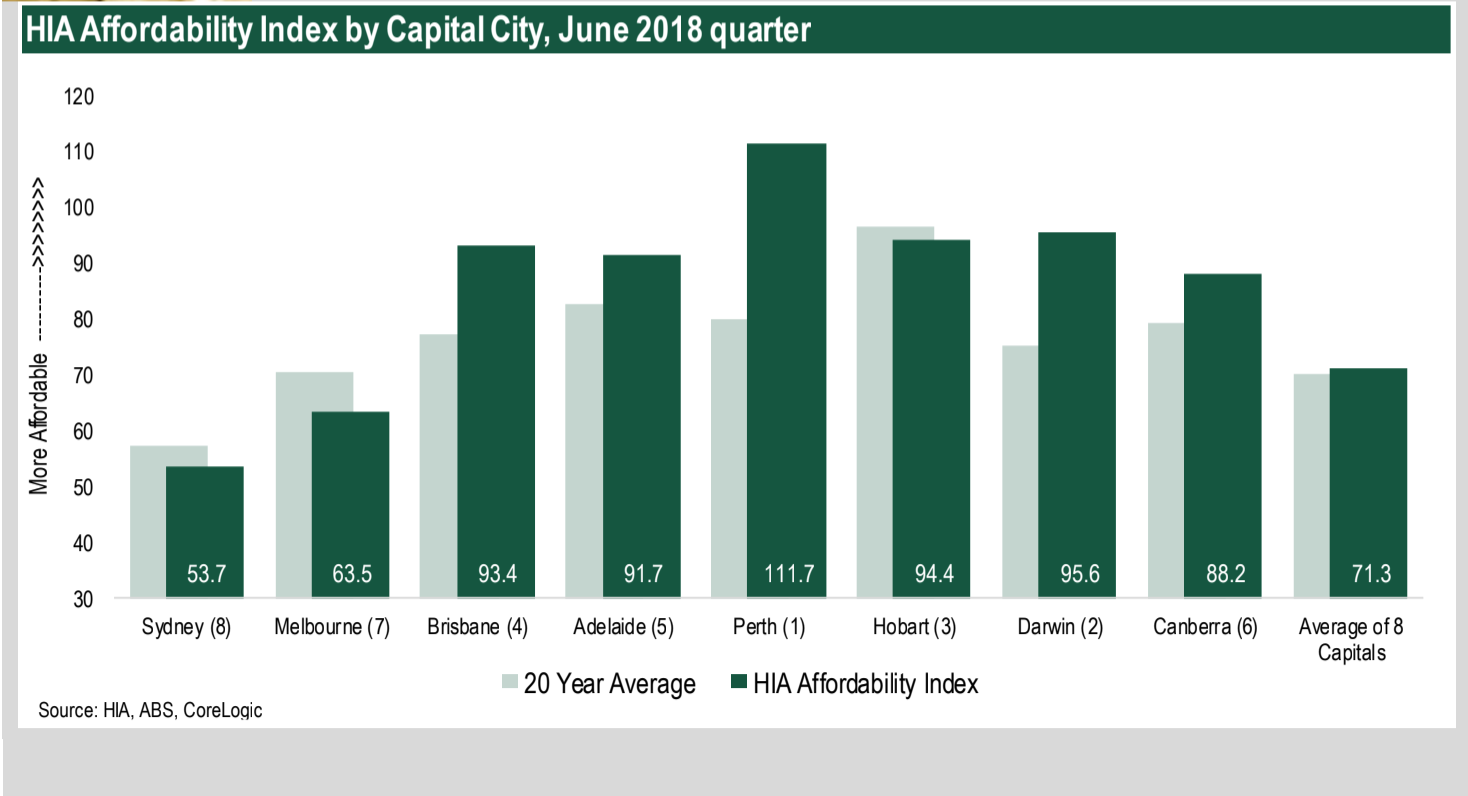 Source: HIA
Source: HIA
But the current plunge in house prices is unlikely to last for long, Hopkins warns.
“With an even balance in overall housing supply and demand in these key markets, the current downturn in dwelling prices is unlikely to be prolonged or severe.
“We could expect this downturn in prices to play out like previous cycles. They typically last 12 to 18 months, with the size of the fall modest relative to the immediately preceding expansion,” Hopkins said.
Ongoing fallout from the resources boom and bust cycles to thank for price plunge
Both rent and dwelling prices have been falling in Perth and Darwn for the last five years, amid the ongoing fallout from the resources boom and bust cycles.
While this is great news for renters and buyers in a market previously notorious for poor housing affordability, Hopkins warns it may be symptomatic of wider economic problems and in particular slowing population growth.
The weak economic conditions in both of these cities are seeing more people leave for interstate than are arriving, Hopkins says.
In particular population growth has followed these cycles and currently both cities are seeing more people leave for interstate than are arriving, resulting in spare capacity in their respective housing markets.
New home building activity has also fallen sharply in both cities as a result of the price declines, which risks causing an undersupply to emerge over the longer term in Perth and Darwin.
Groves told WILLIAMS MEDIA buyers are cautious right now.
“Trade-up family home buyers are lamenting they didn’t buy six months ago when the bottom of the market was apparent. Sellers who’ve been considering selling over the past few years are now cautious about coming to market too soon in anticipation of selling for more in the short-term future, especially down-sizers looking to maximise their capital-gains-tax-free benefit.
“Investors are likely to remain cautious until they see tangible growth which is likely to be towards the end of this year,” Groves said.
The best suburbs in Perth to invest in
According to data from REIWA, the rental yield for the Perth Metro region for houses currently sits at 3.6 per cent based on the overall median house rent price of $359 per week and median house price of $512,500.
This means on average, a typical property investor can expect to generate a 3.6 per cent annual return on their house purchase price.
REIWA says the suburbs of Bullsbrook, Medina, Parmelia, Armadale, Cooloongup, Maddington, Stratton, Camillo, Warnbro and Merriwa are house rental hotspots, offering investors the best return on their investment.
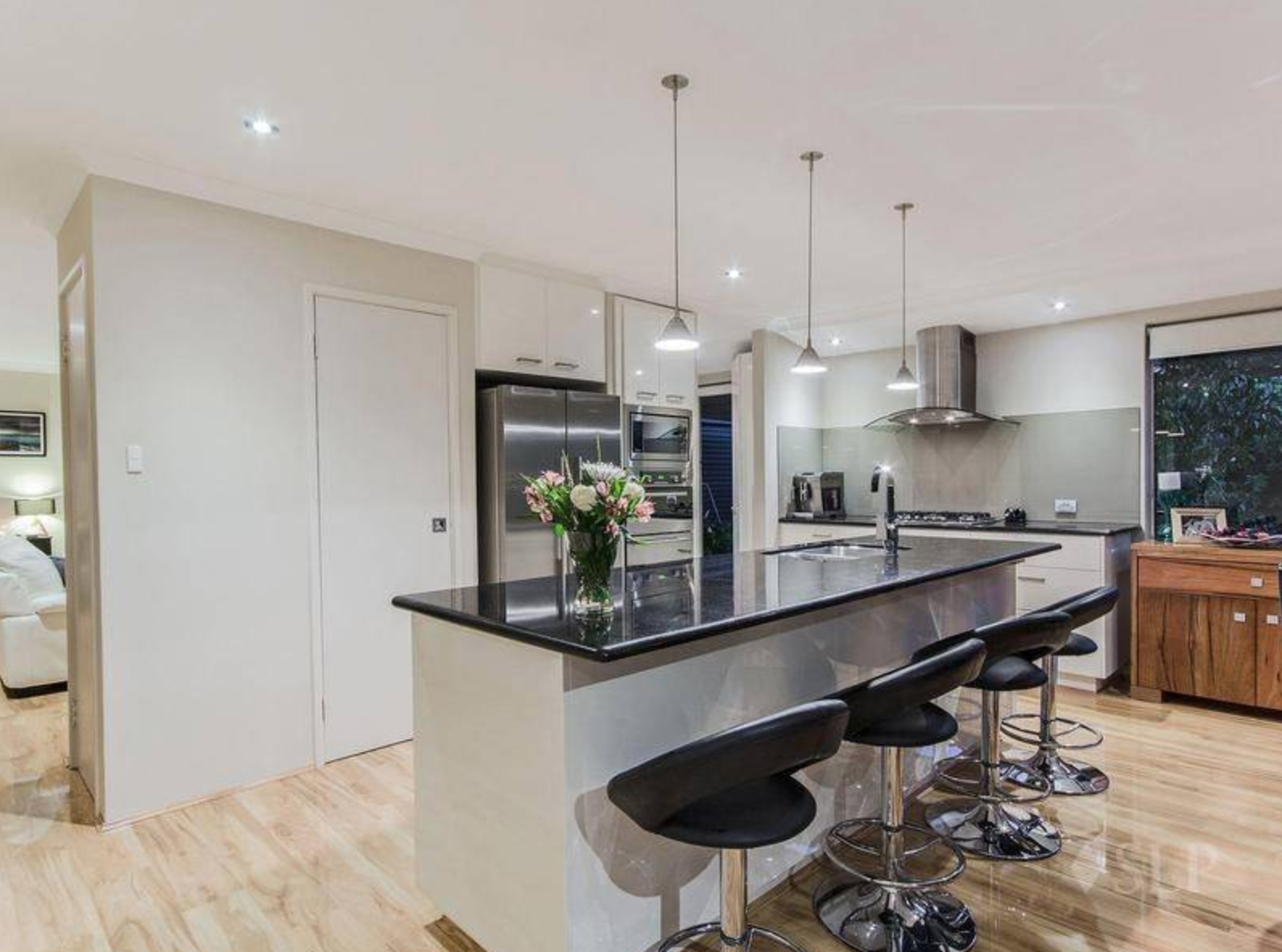 9 Bates Way, Warnbro available for rent through Property Osborne Park, as featured on Thehomepage.com.au
9 Bates Way, Warnbro available for rent through Property Osborne Park, as featured on Thehomepage.com.au
“Whilst the Perth property market is showing signs of a recovery in 2018, buyers and tenants remain the beneficiaries of the current environment, with a good supply of housing and rental stock to choose from at the more affordable end of the property market,” he said.
“With our local market on the cusp of recovering, now is the time for buyers and investors to take advantage of favourable conditions before our local market becomes less affordable,” Groves told WILLIAMS MEDIA.
Chief Operations Officer for Professionals Real Estate Group in Western Australia, Shane Kempton agrees.
“In the vast majority of areas in Perth, property prices are very low and buyers should now move quickly to secure a property before the recovery in the market gains further momentum to avoid buyers regret,” Kempton told WILLIAMS MEDIA.
View the Housing Industry of Australia (HIA) Affordability Index here.
Comments (0)
20 July 2018
By portermathewsblog
via houzz.com.au
Passionate about technology? A home-automation system is likely to be on your wish list – here’s what you need to know
In this practical series, we ask experts to answer your burning home and design questions. A premium home-automation system – also known as a smart-home system – allows you to control multiple functions in the home, such as lighting, heating and cooling, audio, security, door locks and even kitchen appliances – from a single device, be it a touch-screen remote control or an app on your phone or tablet, from wherever you are in the world.
Tempted? Here, Trevor Rooney, director of residential markets at Crestron, reveals everything you need to know about setting up a home-automation system in your own abode.

Home automation is all about convenience. Having the ability to control core elements in your home remotely, such as lighting, heating, entertainment and front-door access, can save time and make life run more smoothly.

Image: Crestron
What sort of things can a home-automation system do?
- Give you remote access to door locks so you can control who has access to your home when you’re not there.
- Switch lights on and off remotely or connect them to a timer or sensors, so they go on automatically (also great for security when you’re not home).
- Control heating or cooling so you can come home to a warm interior in winter or a cool one in summer.
- Give you remote access to alarms and surveillance systems; you will be notified if anyone approaches your home and can see who is at your front door. You can also switch surveillance on and off remotely.
- Change the television channel or switch the set on or off via voice command.
- Set your coffee machine to turn on automatically in the morning (it will even brew you a cup before you get out of bed).
- Automate your pool and pond cleaning, with the ability to adjust settings from your smart device while you’re not at home.

For even greater convenience, you can pre-determine the settings on your automated system for lighting, heating and entertainment to suit different situations. For example, you could set the system to control various elements simultaneously, so that when you go to bed it turns off all the inside lights, switches on the security camera at the front door, adjusts the kids’ night lights, and switches off the heater – all with one swipe of your smart-screen remote or an app on your phone.

Can automation cut my energy bills?
Absolutely. Here’s how:
- Accidentally left your lights on when you left the house? With home automation, you can switch lights off from wherever you are.
- Connecting blinds to a sensor-controlled system means they’ll close automatically when the temperature reaches a certain point, keeping your home cooler and reducing air-conditioning costs. You can also keep your home naturally cooler by setting up an automated shading system for overhead or exterior window shades.
- No more overheating your home unnecessarily; by installing a smart thermostat, your heating will switch off automatically when the temperature reaches a certain level.

How is a home-automation system different to a smart-home assistant?
Devices such as Google Home and Amazon Echo are great for convenience. They can perform simple tasks by using voice recognition, such as checking the weather, reading out the day’s headlines or performing Google searches.
A premium home-automation system is far more sophisticated. It allows you to automate several different devices through one simple-to-use interface or an app on your phone. So, instead of having five different remote controls to manage your various devices, you just have the one platform, which can be controlled by voice or touch.
 Image: Crestron
Image: Crestron
How does voice control work?
Systems such as those at Crestron can be connected to Amazon Echo’s Alexa Voice Service to enable voice control. This allows you to give voice commands, such as ‘Alexa, turn off the kitchen lights’ or ‘Alexa, raise the temperature in the family room by five degrees.’
You can also control multiple systems simultaneously through a number of preset scenes. For example, in the morning you could say ‘Alexa, tell Crestron to activate Morning Theme,’ and the blinds will slowly open, the lights will switch on and a warm shower will start running in the bathroom. Or, if you want to set the mood for an intimate dinner party, simply say, ‘Alexa, tell Crestron to activate Intimate Dinner.’ The dining room lights will dim, the window coverings will adjust and soothing music will play from your speakers.

What should I expect to pay?
This depends on the level of automation you want. Crestron’s new PYNG 2.0 platform (available later this year), which controls audio/visual functions, such as the television, Foxtel, Apple TV and Sonos, starts from around $3,500. This would include the processor and a touch-screen remote control. Incorporating lighting and shading solutions into a home-automation system would see this cost rise to around $10,000, depending on the size of the space.
A fully connected smart-home system starts from around $25,000, depending on the size of the property.

Can I retrofit an automated system?
It’s best incorporated during the building phase. However, it’s certainly possible to install after the build.
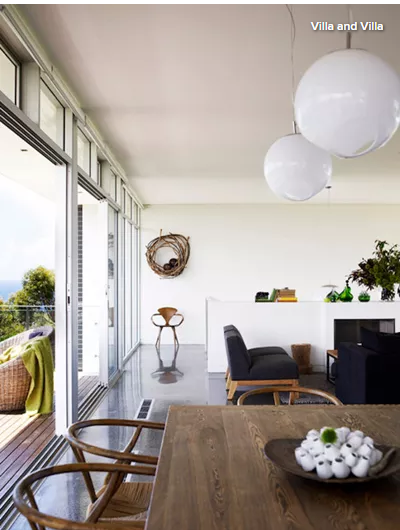
Comments (0)
16 July 2018
By portermathewsblog
via therealestateconversation.com.au
Be a smart investor and have a loan strategy.
You have saved away and have enough cash to consider purchasing property as an investment. Like any purchase, it is a huge one so having a strategy in place will keep you focused and ensure that you are doing as much due diligence as you can for a successful investment.

Not many successful investors became successful by accident – we recommend you start by seeking professional financial advice to really determine what your borrowing capacity is and how realistic your investment is.
Debt does not have to be scary, unless it is the wrong type of debt. In an ideal situation, you will want your debt to be productive and if you have planned how your cash flow will be affected, then you can have a clear understanding of how purchasing that next investment will affect your lifestyle. Productive debt in our eyes can be used as an advantage to buy an asset or generate income such as rental income.
Understanding your loan strategy
If you are looking to invest in multiple properties, we think it’s important to understand the short and long term perspective of property ownership. You have to think about how this next loan or investment is going to influence your life and your cash flow as well as what the situation might look like with your third or fourth investment. We say this as it can really make a difference in the type of property you purchase in the first place.
Think about how positively or negatively geared loans will affect what you purchase or how you live in the future. It may seem odd to be thinking so far in advance, but we think it is important to really understand your financial situation and also the results you would like to achieve as a property investor.
This is where we think it is important to be surround by the right advice. The right financial advisor for you will be able to help you plan the various scenarios to suit your end goal – after all everyone has different goals in their lives.
Comments (0)
25 June 2018
By portermathewsblog
via therealestateconversation.com.au
Many investors steer clear of vacant land because they mistakenly believe they can’t claim interest repayments on it.

In fact, the biggest thing that most accountants get wrong when advising clients on vacant land is that the interest component on it isn’t tax deductible.
I’ve had many arguments with many accountants about this topic over the years!
The key component is the clear intent to build a property within a reasonable timeframe. If the investor was audited, the investor would need to prove that the timeframe – whether it’s a few weeks or months – was necessary to enable to construct the investment property.
I’ve heard this ‘non-advice’ so many times over the years and that’s why it’s so important that you get advice from a property accountant with a strong understanding of the relevant legislation.
Which land is best?
With vacant land, there are a number of different strategies that you could implement.
The first one is residential land that is being carved up by a developer, but you buy before the titles for each individual block have been registered. Effectively, you’re buying land off the plan, but it’s important to understand that there are pros and cons to this strategy.
The pro is that if it’s in a high-demand area and you’ve bought during the early stages of development, you tend to make some money. You also generally only need to put down a few hundred or thousand dollars as the deposit. Naturally, because you are very much dependent on how fast the developer can register each block, you’re at the whim of the market, which can be a con. For example, in my portfolio, I once bought 18 blocks of land that were not yet registered.
In fact, registration wasn’t supposed to happen for another two years. However, it happened in just eight months and I wasn’t ready. So all of a sudden I had 18 parcels of land that I had to settle on, but I didn’t have my finance organised.
After discussing it with the developer, I ended up settling on four of them and he released the other 14 back to the market, which worked out well for him because the market had improved.
So, if the land is registered well ahead of time, you can be left scrambling.
On the other hand, if registration takes longer than expected, the market could have slowed down. Like any off-the-plan project, you only need one bad valuation to negatively impact
the entire subdivision or development. Plus, everyone will be building at the same time, which means you’re competing for trades and will likely be finished at the same time, too, and that means a strong likelihood of softer prices.
What about greenfield and infill sites?
When I say greenfield sites, I mean blocks of rural land that you intend to rezone for residential usage. Now this is a strategy for more advanced investors because there is more risk as well as a higher financial component required for earthworks and approval costs. Greenfield sites can be bought for an affordable price, but if you can’t get the subdivision approved you need to have the money behind you to fight all your way up to the Environment Court if necessary.
A better strategy is to target infill sites within already established residential areas.
In this scenario, you buy a larger block of land, usually with a house on it, to carve off the land at the back or the side to sell as vacant or with a new property on it.
The other option is to subdivide, then construct a new dwelling and then keep both. Infill developments can also lean towards knocking the old house down, splitting the block into two and selling the vacant land, or building two houses or even multiples. It must always come back to whether there is a market for your project and whether the numbers add up, because you must take into account all of the costs on the way in and on the way out.
That way you can make an educated decision whether to keep holding long term or take your profits to invest elsewhere.
Whichever strategy you choose, you must do your figures on the worst-case scenario to see if it adds up. That’s because land generally has a lower, or no yield to start off with, which means your holding costs can be higher than with a house, for example.
At the end of the day, vacant land as a strategy, does work. You just need to have your eyes wide open to ensure your figures are correct and you must understand that it might be a while before income rolls in.
Finally, it goes without saying that you must get tax advice from a specialist accountant who understands property. If you don’t, you could end up with pockets just as vacant as the land you’re investing in.
Comments (0)
22 June 2018
By portermathewsblog
via popsugar.com.au
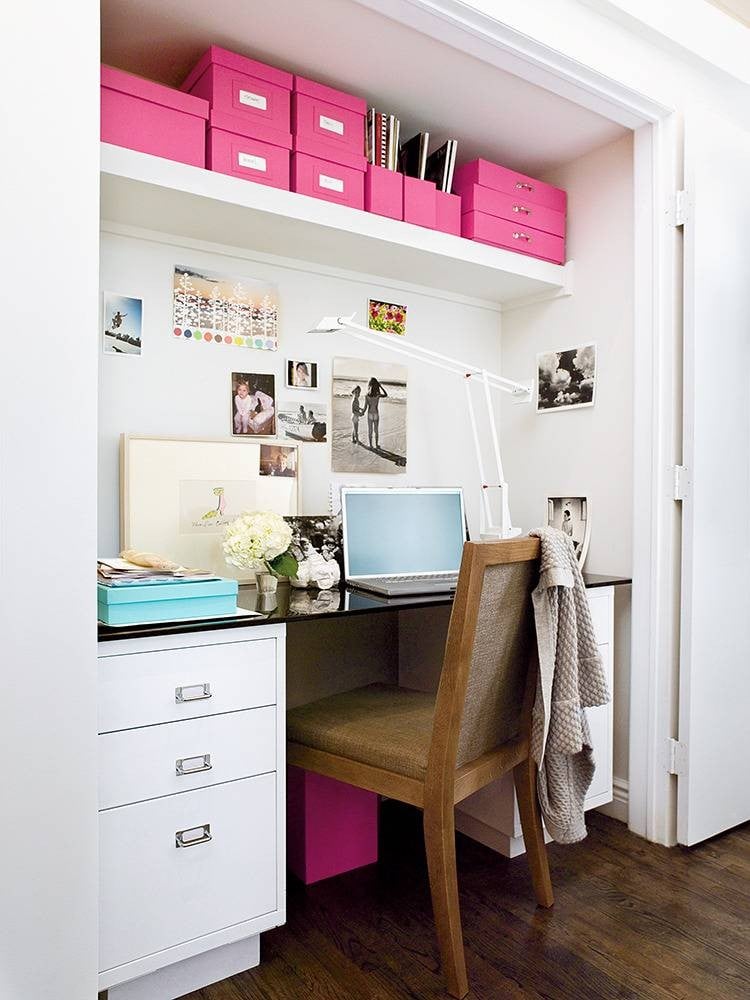
If searching for your keys is a part of your morning ritual, it’s time to break the cycle. Being organised is more than just a personality trait, it’s a lifestyle decision that’s easier to achieve if you stock your home with the right tools. These 15 clutter-busting essentials will make your days feel longer and less stressful. Cheers to that!
Idea: If you don’t want to hang a key hook, do yourself a favour and get a key catchall. Having a designated place to place your keys when you walk through the door will save you from the “running late” syndrome. Don’t be that person.
Get it: Making your own leather catchall is easier than you’d think. Follow this tutorial on A Beautiful Mess to DIY your own
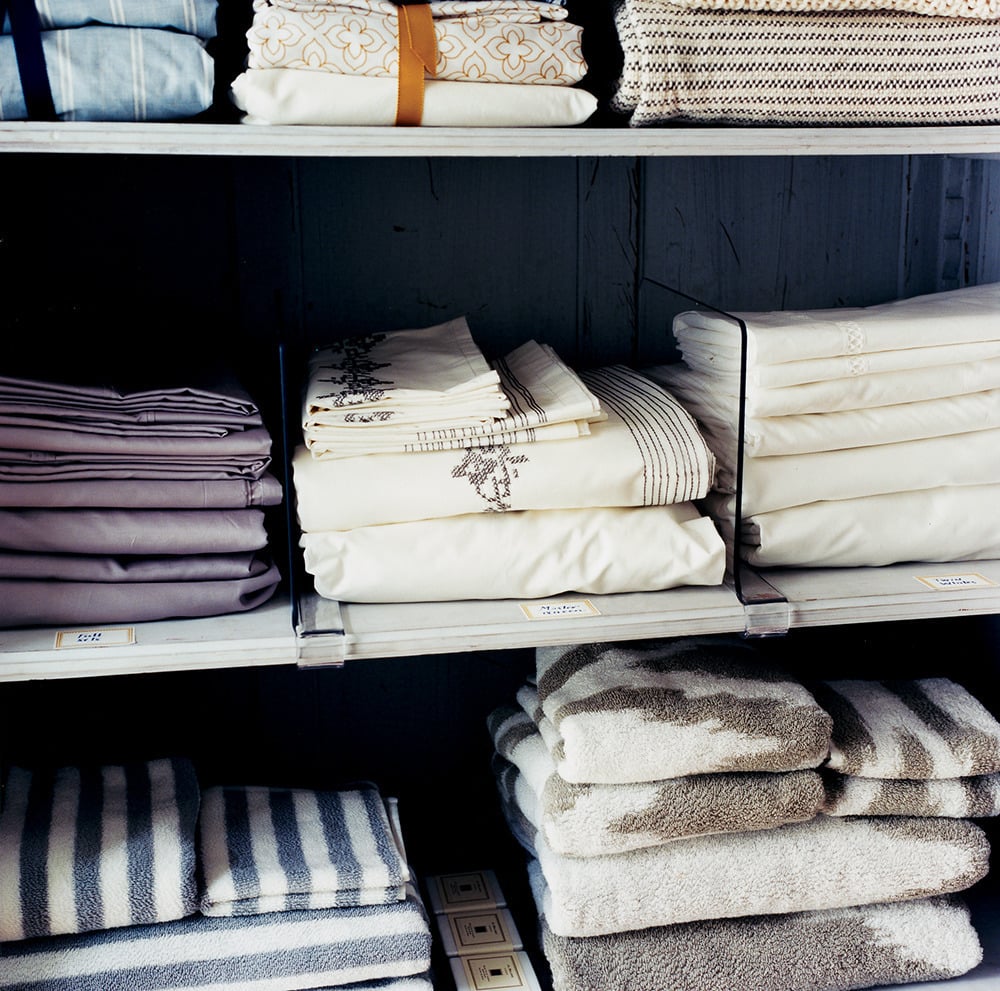 Image Source: Bahar Yurukoglu for Domino
Image Source: Bahar Yurukoglu for Domino
Idea: You know how it goes . . . You take the time to meticulously fold sheets and towels, and by the end of week, it looks like a bomb exploded in your linen closet. Here’s where clear shelf dividers come in. They’ll keep your stacks of linens in order without creating an eyesore.
Get it: Stock up on these acrylic shelf dividers to tame your most unruly closet.
Idea: Put your pantry on display by keeping dried goods and other treats in lidded glass jars.
Get it: You can get her kitchen jars at Ikea.
Idea: If you’ve seen these used to hang pots and pans, you’ll be happy to know that the idea translates for any room in the house. We love how Sugar + Cloth blogger Ashley Rose used one for above-the-bed storage and decor.
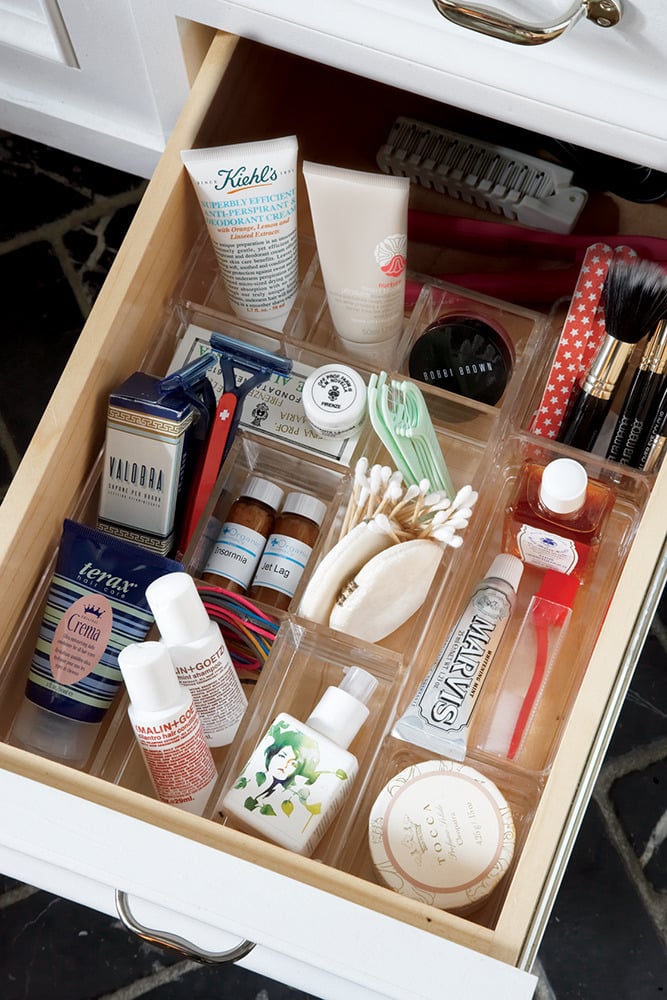 Image Source: Paul Costello for Domino
Image Source: Paul Costello for Domino
Idea: If shuffling through a drawer to find a tube of lipstick gives you anxiety, you’ll be amazed by the efficiency that a simple drawer organiser can offer.
Idea: Forget the space-saving allure of forgoing a knife block — we’re crazy about the fact that you can see the shapes and sizes of your most utilised knives while keeping them in reach.
Idea: It’s amazing how quickly a tray can corral clutter. Bonus points for turning the top of your toilet into an extension of your medicine cabinet (with the addition of a slim bud vase and framed picture, of course).
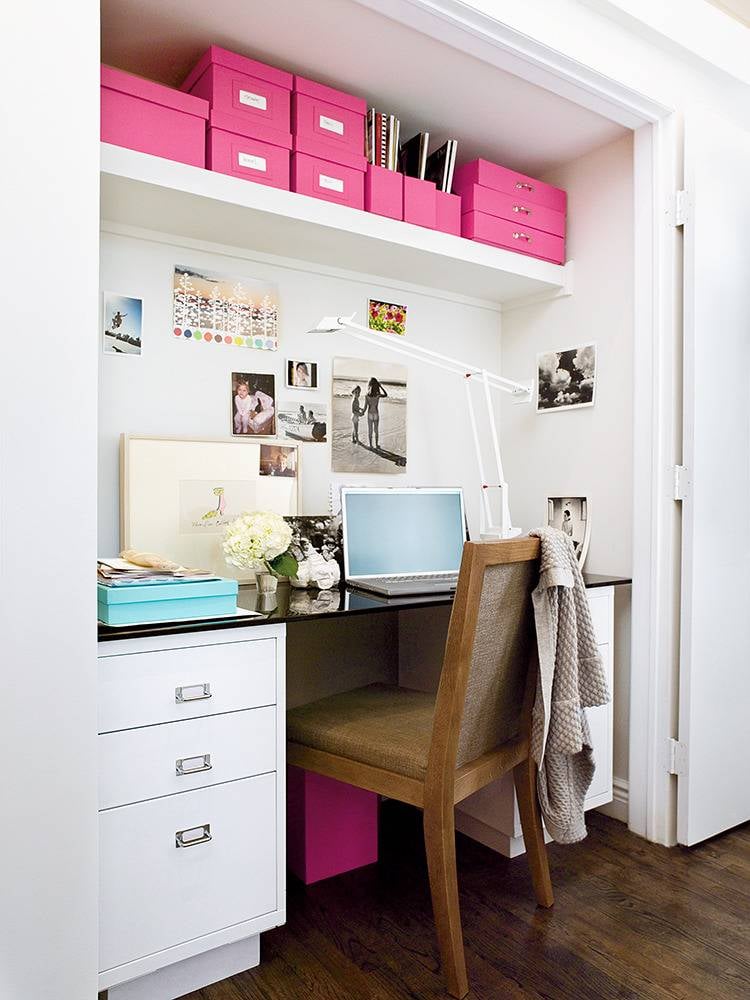 Image Source: Cahan Eric For Domino
Image Source: Cahan Eric For Domino
Idea: Labelled boxes are a great way to organise the things you want out of sight.
Idea: Sure, you can use them to hang a curtain, but they work wonders in making the most out of shelves. Follow Martha Stewart’s lead, and use them to organise kitchen items like pot and pan lids, trays, and cutting boards.
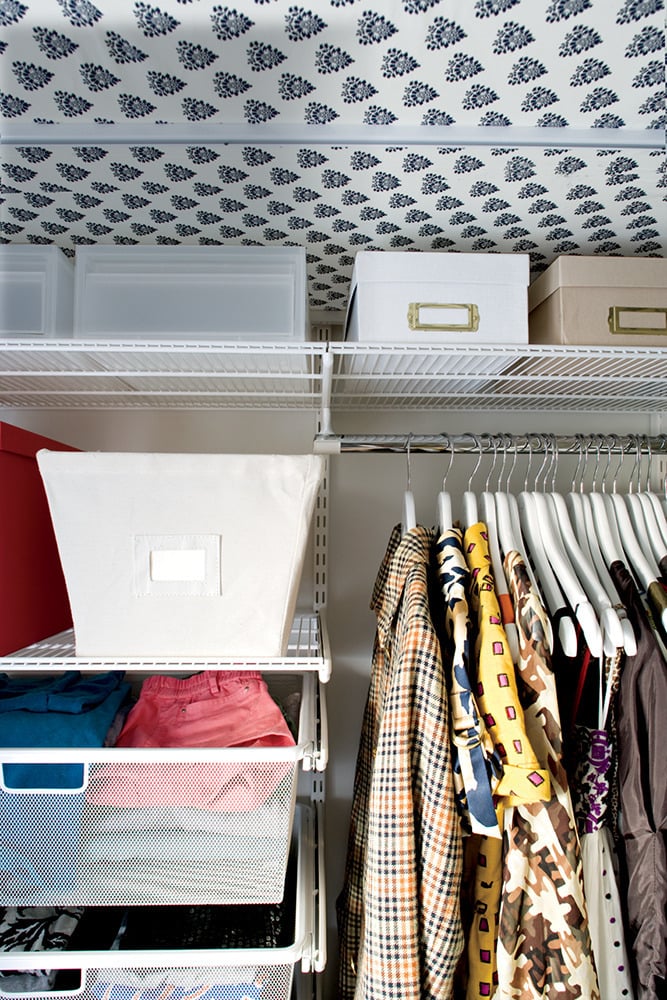 Image Source: Lesley A. Unruh for Domino
Image Source: Lesley A. Unruh for Domino
Idea: Whether you need more storage space for clothes or craft supplies, these wall-mounted mesh drawers allow you to customize your storage and easily see what you’re storing.
-
Makeup Brush Cups

Idea: Instead of cramming makeup brushes into a messy drawer or makeup bag, keep them within easy reach in a stylish cup.
Idea: Whether it’s a drawer filled with neat rows of spices or a creative DIY that frees cabinet space, every organized cook seems to have their spice collection under control.
Get it: A Beautiful Mess has an easy-to-follow tutorial for making these nifty magnetic spice jars.
-
Clever Toilet Paper Storage
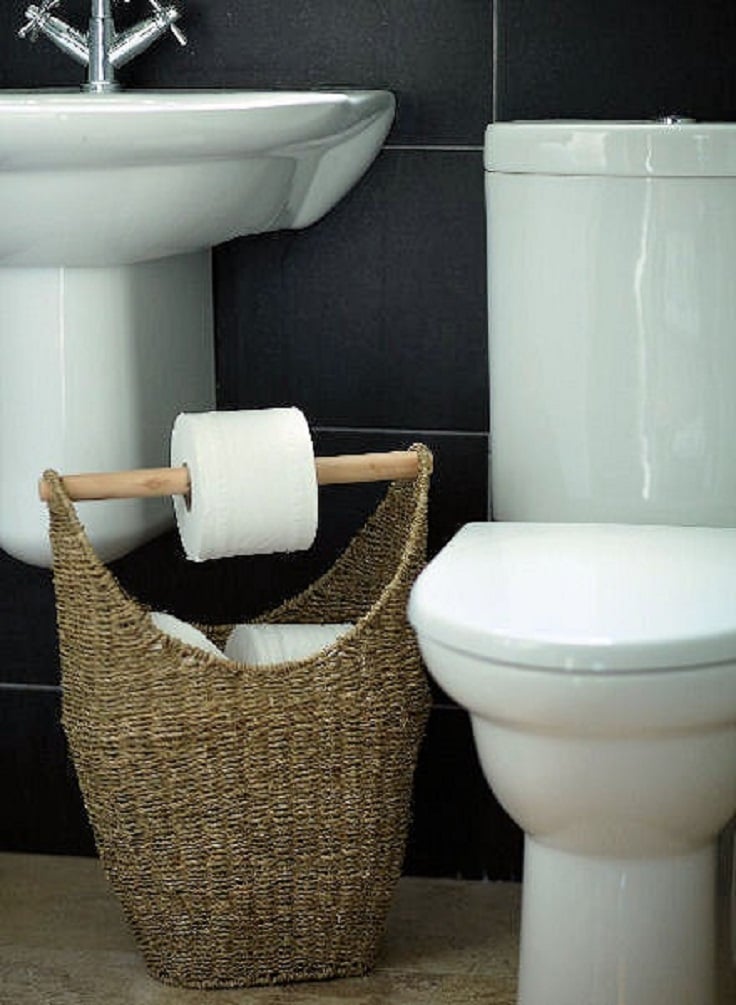
Idea: Running out of it when you need it is the worst, but stacking it in plain sight can cramp your bathroom’s style. Kill two birds with one stone by turning a basket into a toilet paper organiser and dispenser.
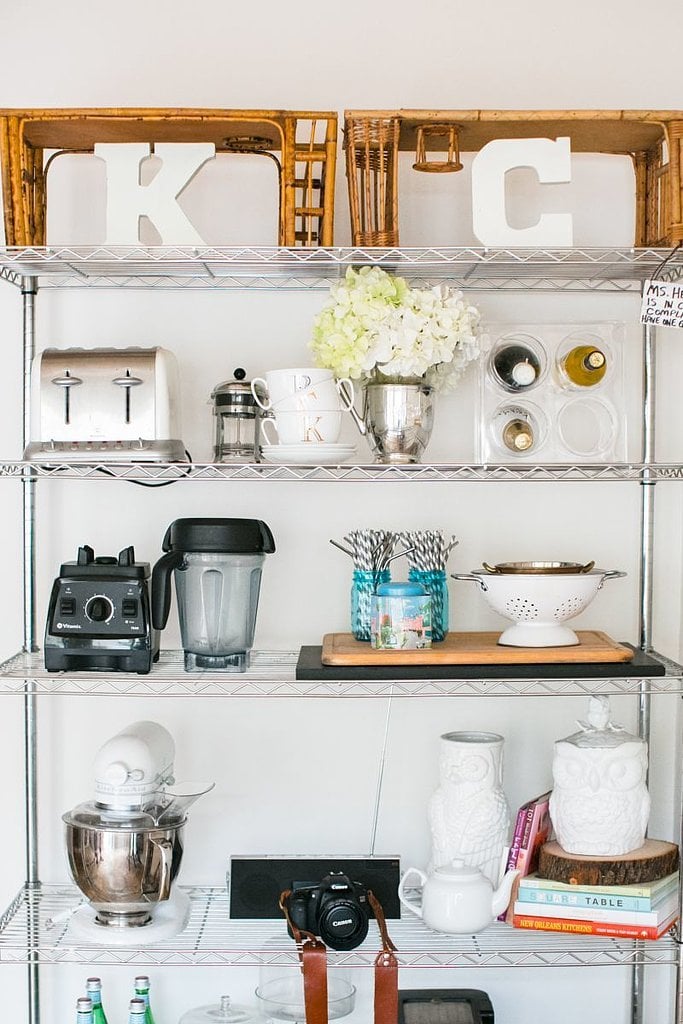 Image Source: Monica Wang for The Everygirl
Image Source: Monica Wang for The Everygirl
Idea: A lack of cabinet space doesn’t have to stop you from owning bulky appliances like KitchenAid mixers and high-powered blenders. Some of the cutest rentals we’ve seen use stainless steel shelves for stylishly organization, making it easy to keep everything within sight. The best part? You can extend them or shorten them for a customized height.
Get it: This shelving unit is a great starter package.
Comments (0)
18 June 2018
By portermathewsblog
via therealestateconversation.com.au
Buying and selling property in WA has traditionally been by way of a conventional private treaty arrangement, however buyers and sellers are missing out on a more pure form of transaction, and that’s the auction.

Granted, auctions are becoming a more accepted selling method and the numbers of weekly auctions in WA has increased significantly over the past five years, but still lag a long way behind private treaty sales and the Eastern states. So why is that we’ve been slow to jump on the auction bandwagon?
Firstly, WA’s law for property transactions using the current “Offer & Acceptance” method protect both buyer and seller and in the majority of cases are easy to follow. The system works effectively for all parties to the transaction including the buyer, seller, settlement agent/conveyancer and banks. The downside of this system is that is can be time consuming and in many cases is conditional upon buyers obtaining finance, property inspections, having to sell their current home, etc.
More importantly, the system has a major flaw in it and that’s the asking price is disclosed and typically buyers knock the price down to where they feel comfortable – so it’s not good for sellers.
So why should we look to auctions? The auction system is the most pure form of selling and buying as there are no “secrets” surrounding price or selling terms; all terms are provided in the marketing campaign and the buyers set the price on where they see value. Selling by auction in most cases is quicker than private treaty. And the seller has three bites of the cherry; sell before auction day, on auction day or usually within 30 post auction day.
There are two main misconceptions surrounding auctions:
1. They cost too much. The cost of the auction is merely the auctioneer’s fee for calling the auction and working with the seller, buyer and agent to achieve the desired result. Typically, an auctioneers’ fee is in the vicinity of $700 to $1000. All other costs are associated with the marketing campaign to promote the property.
2. Auctions only “work in expensive areas”. That’s just a suburban myth. There’s many examples of properties below the current Perth median price of $510,000 selling at auction.
WA is one of only two states, the other being Tasmania, that don’t have a cooling off period in our property contracts. A cooling off period allows the buyer to “break” the Offer to Purchase usually between 2 to 5 business days after the offer has been signed. In other words, if the buyer changes their mind for whatever reason they can legally break the offer and walk away for a very small consideration to the seller, usually between 0.2% – 0.25% of the purchase price.
As WA doesn’t have cooling off provisions in our property contracts, this makes it far too easy for sellers and agents to default to Private Treaty transactions. If cooling off provisions were introduced to our property contracts, I’d predict a huge increase in the number of property auctions taking place in WA.
Finally, too few real estate agents embrace auctions and the auction process with vigor. They lack confidence and in some cases, the ability to explain the different marketing options available to sellers and automatically default to Private Treaty. This is a marketing injustice to sellers and the sooner we can demystify and legitimise the auction process for both buyers and sellers, the better.
Comments (0)